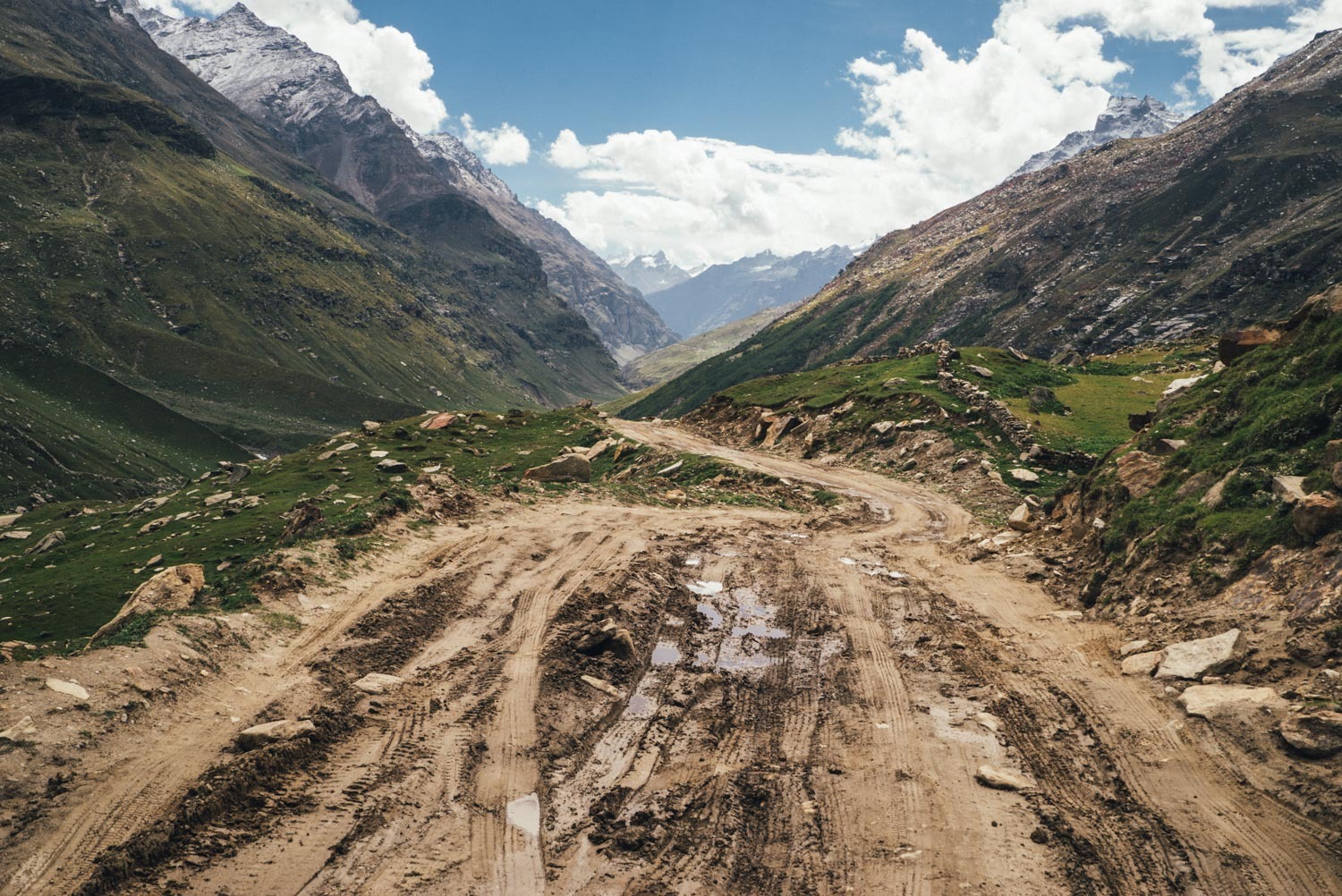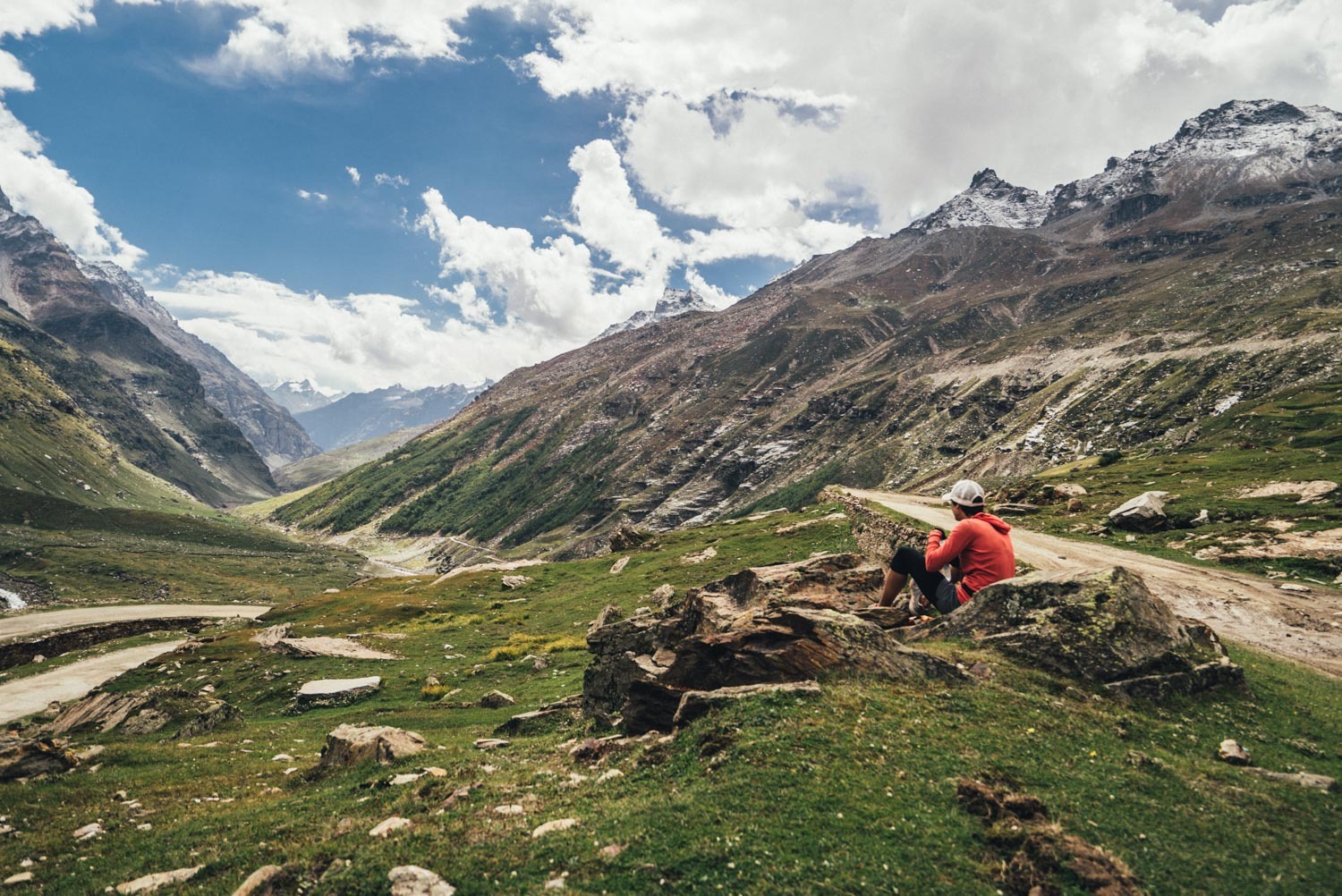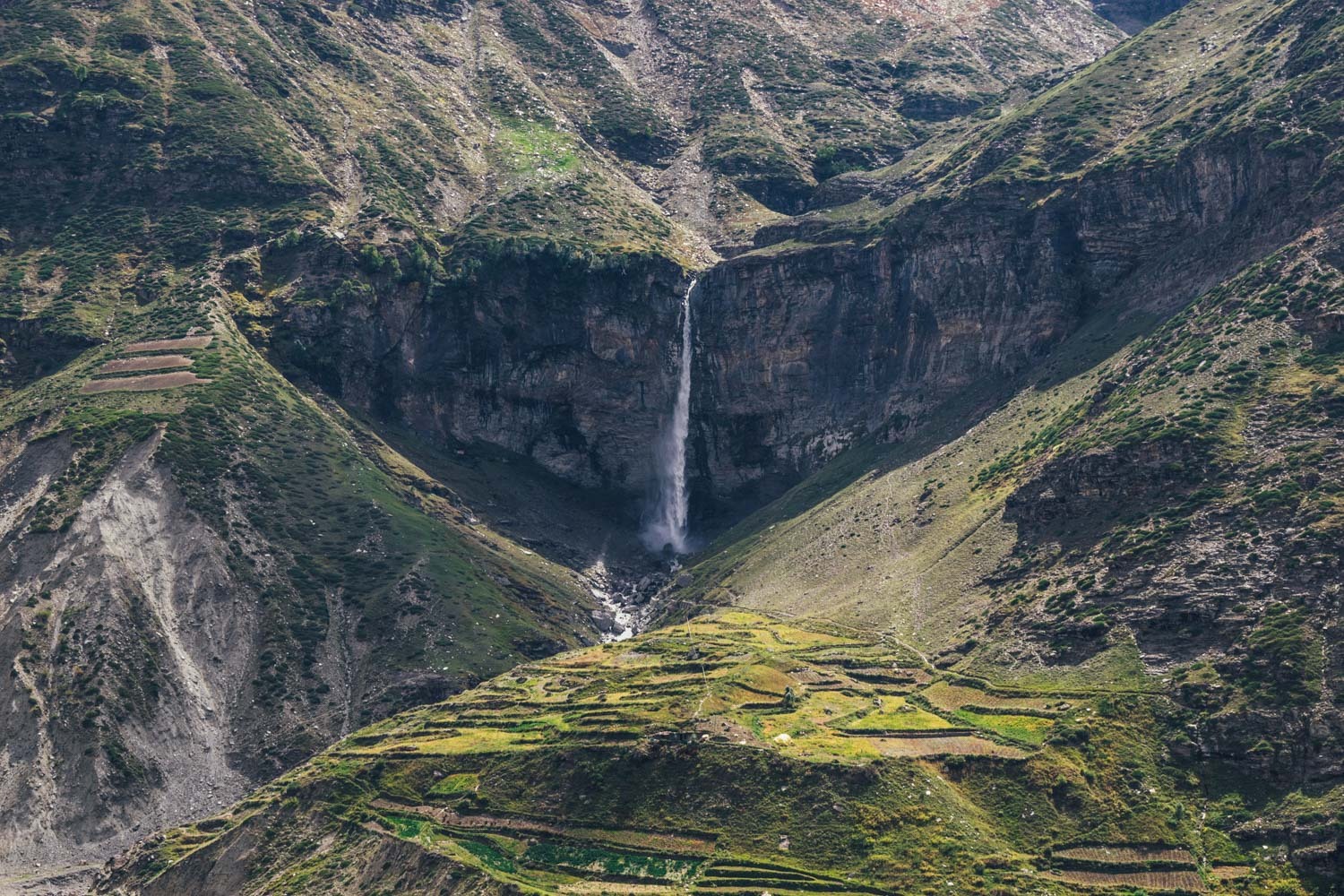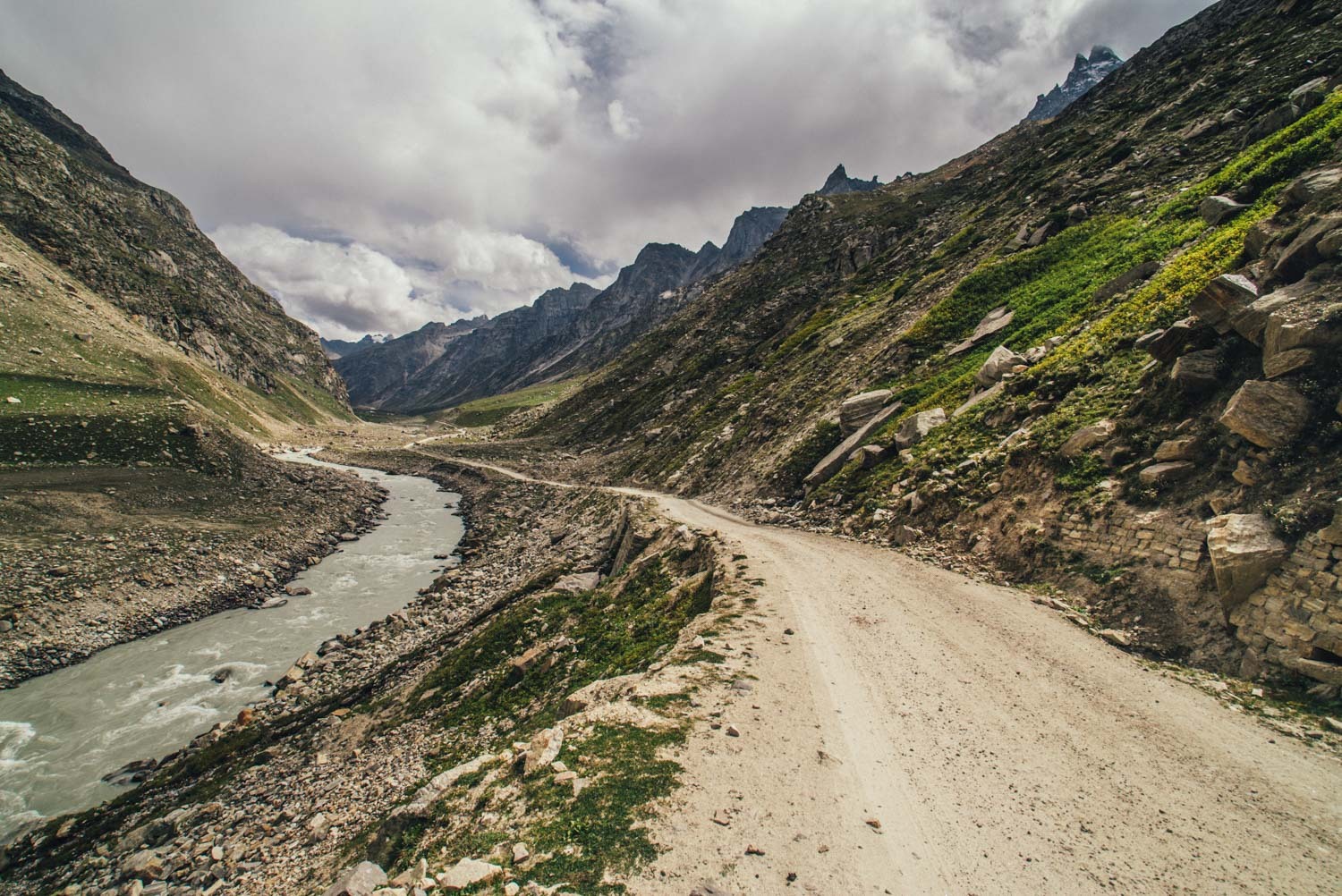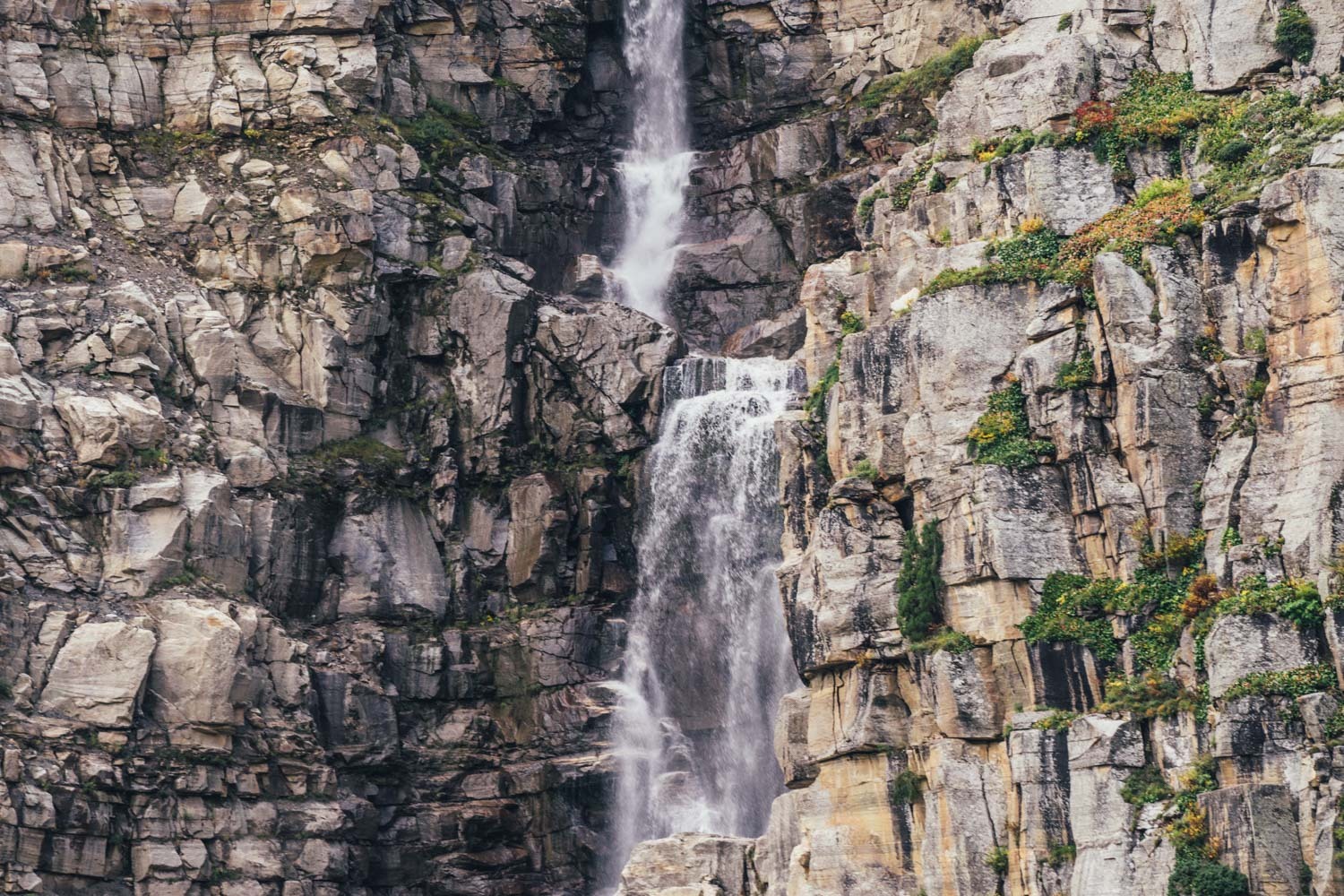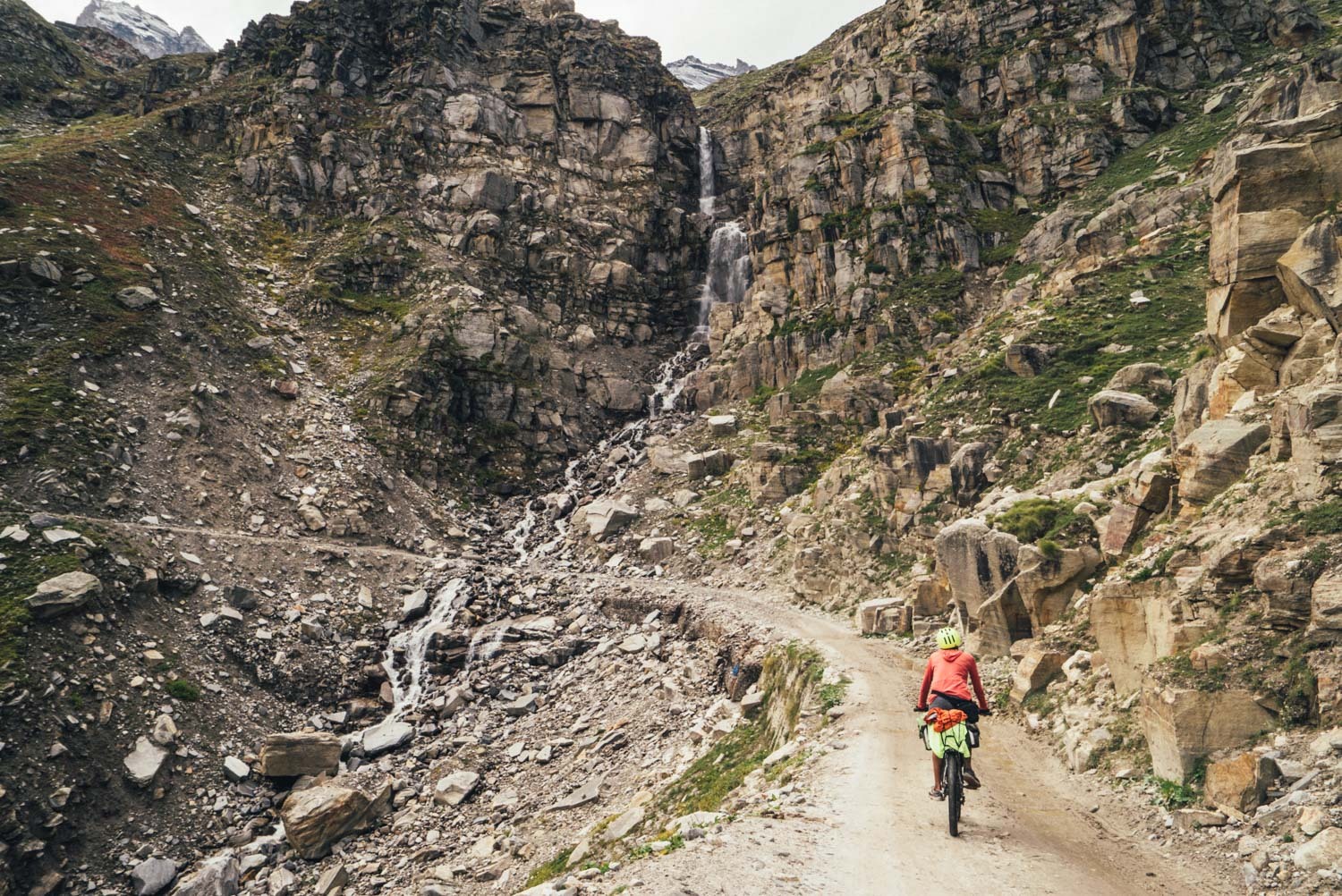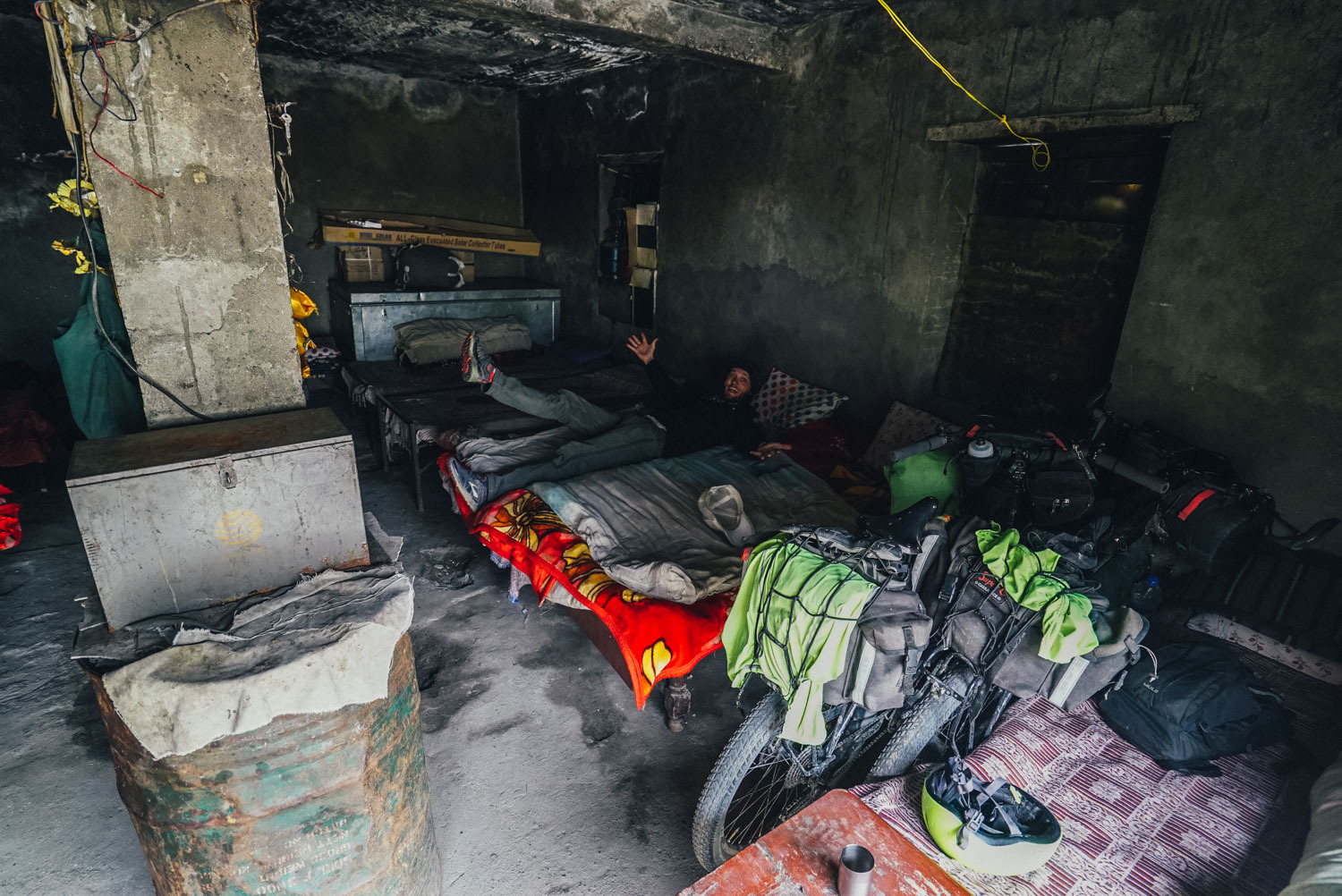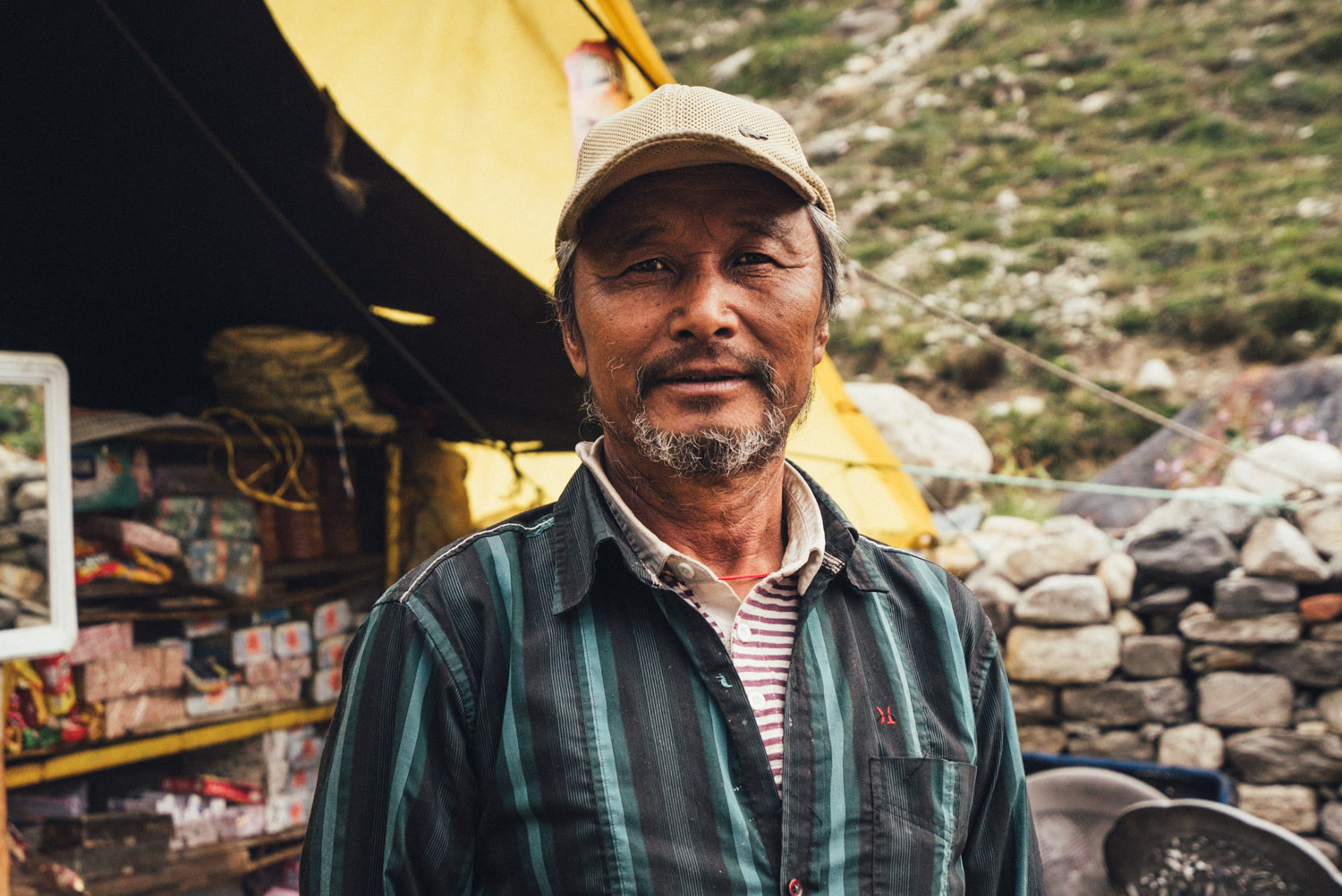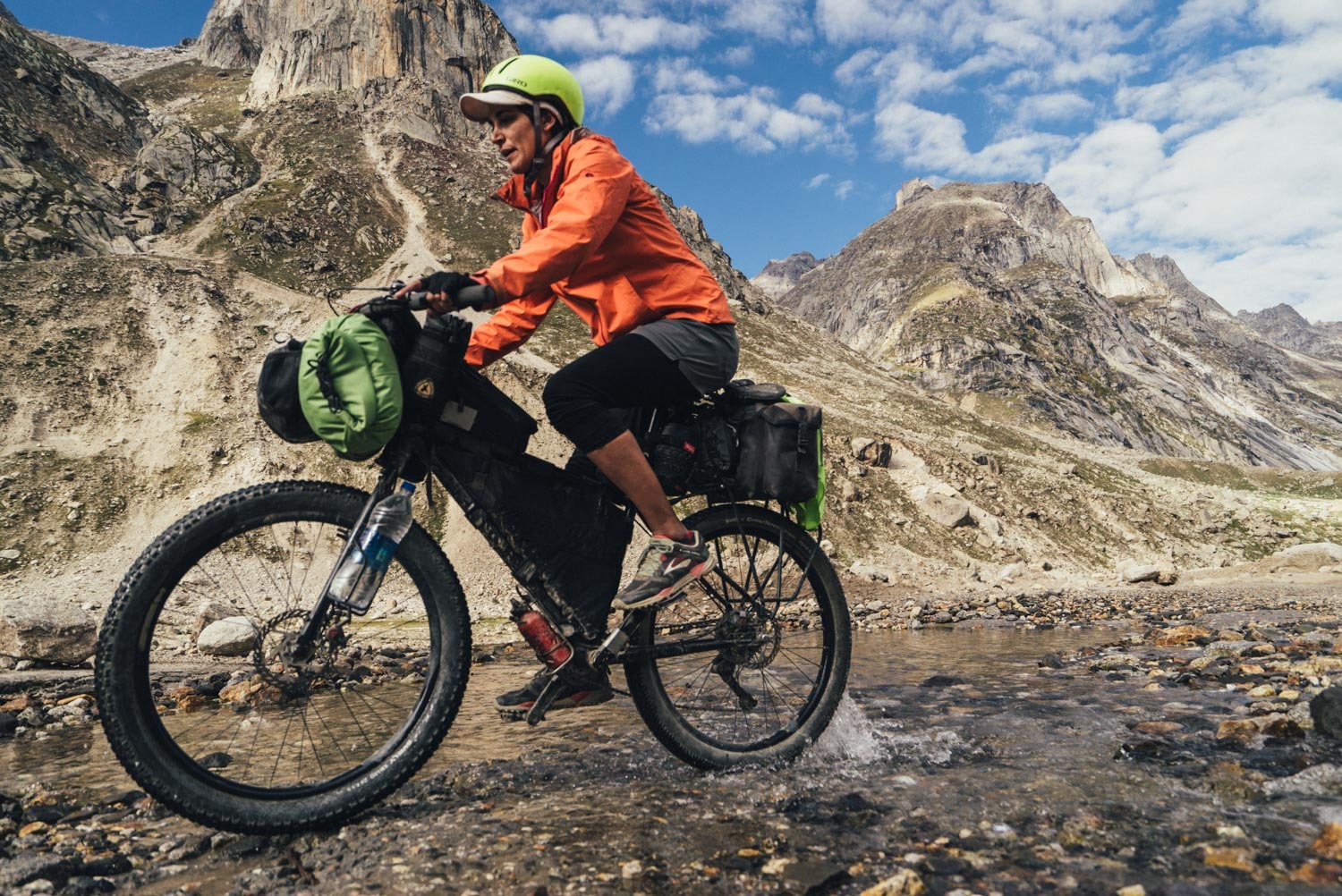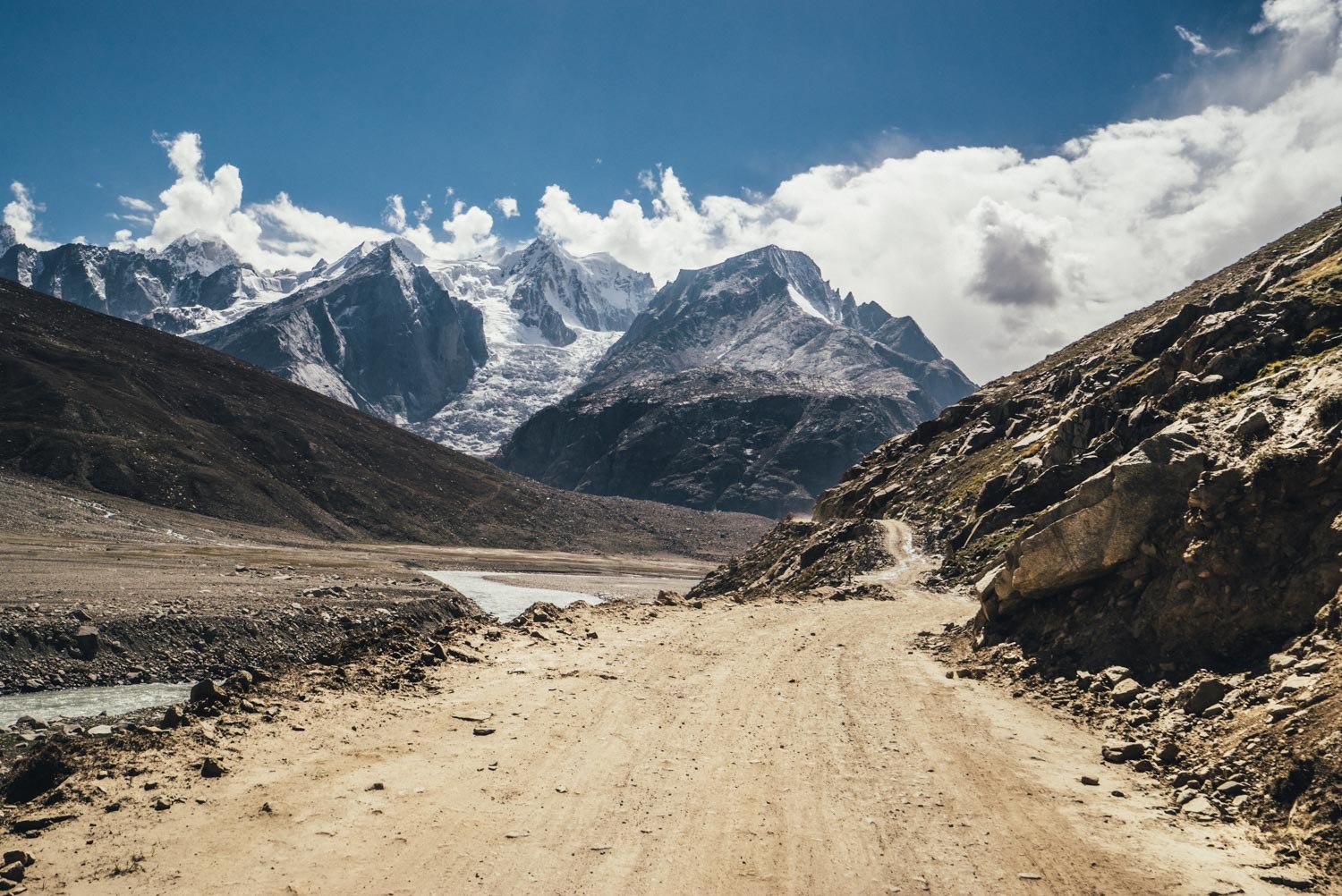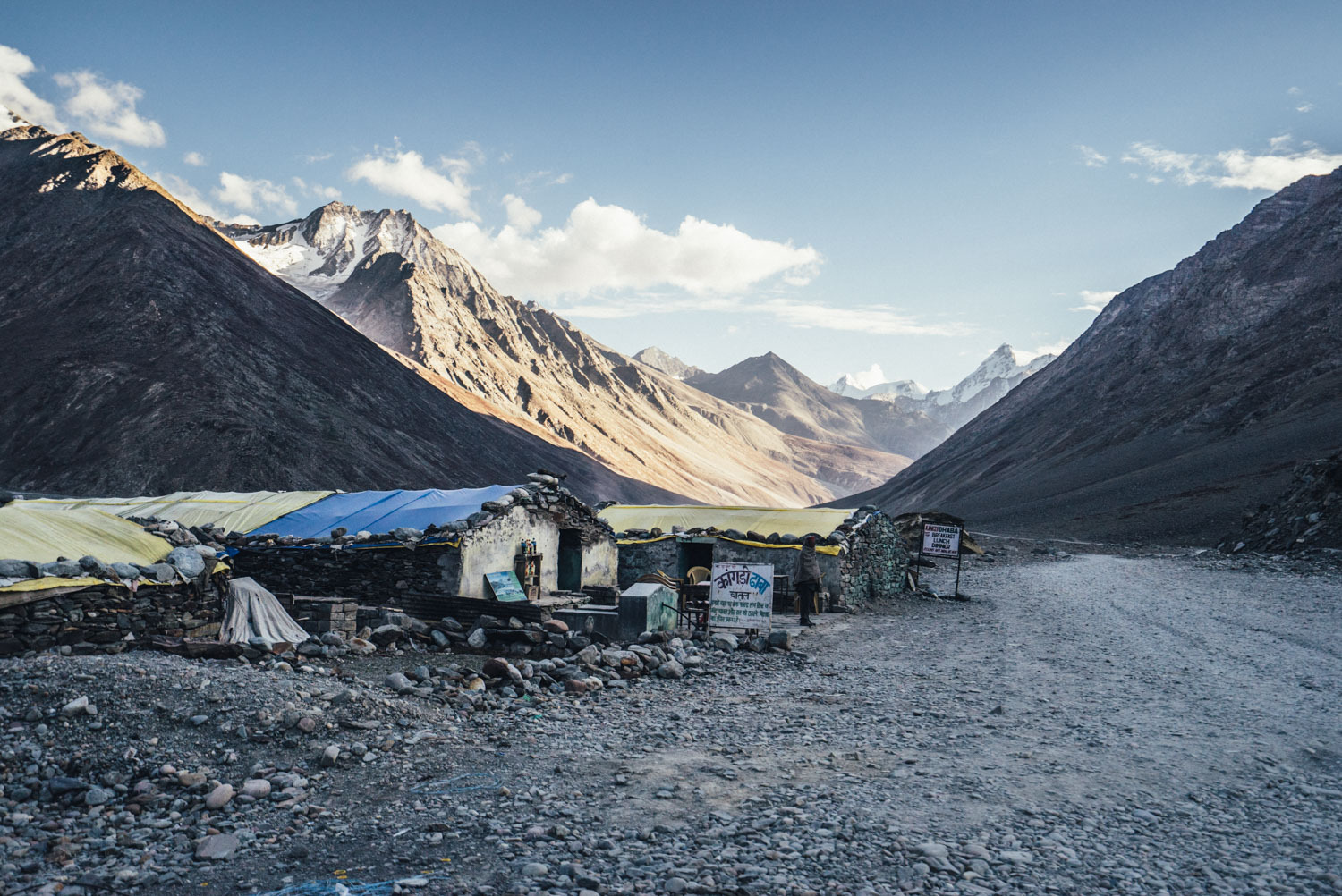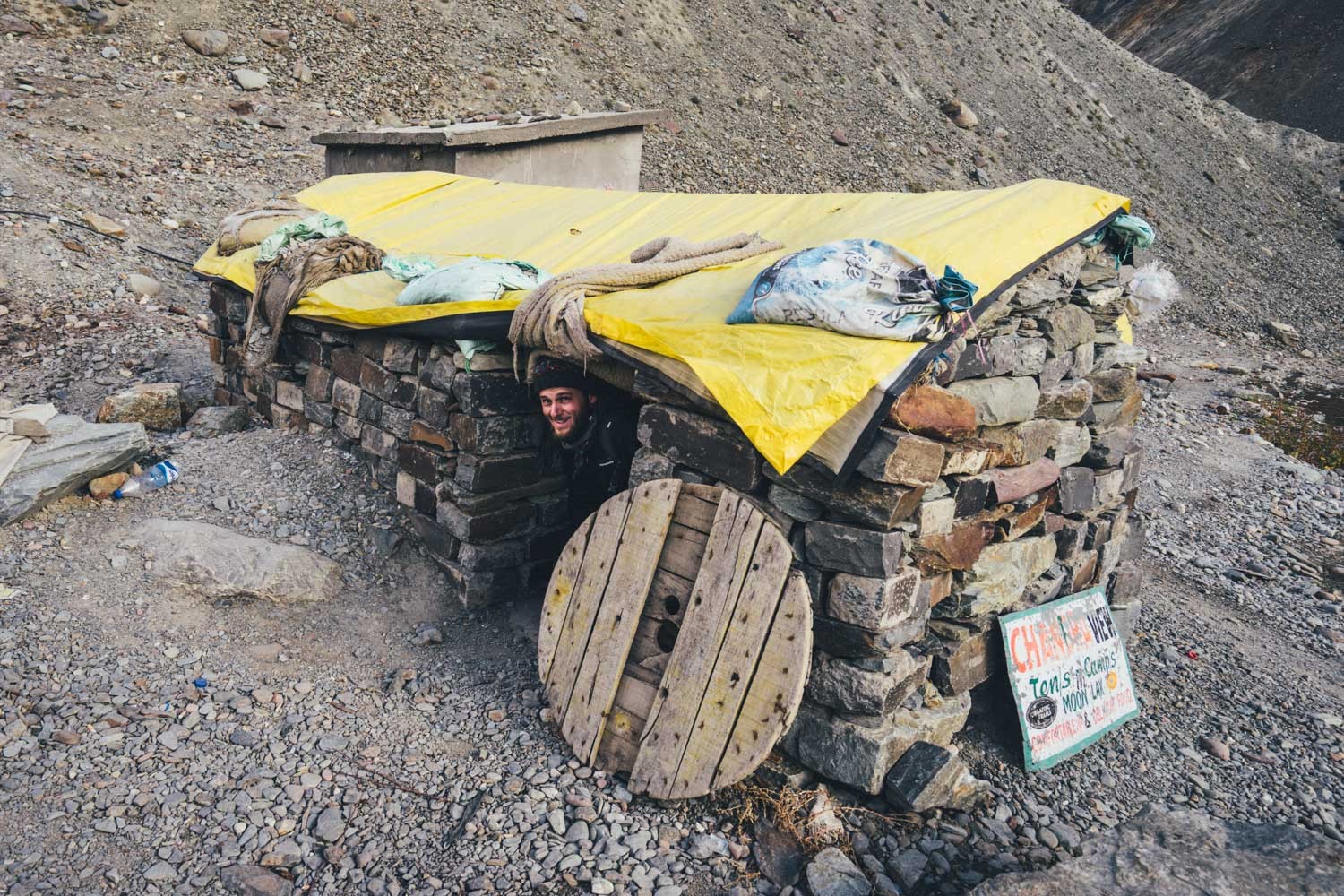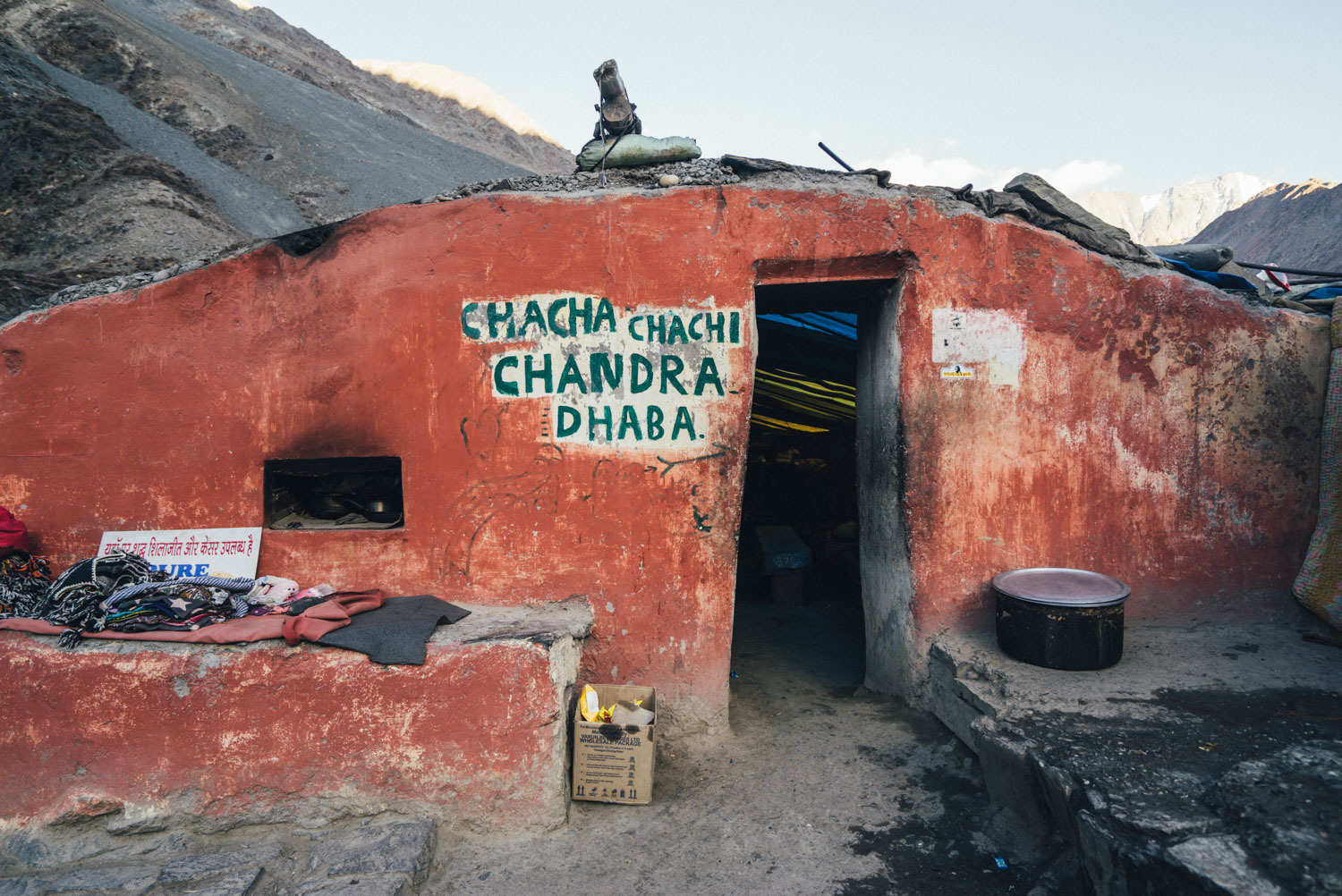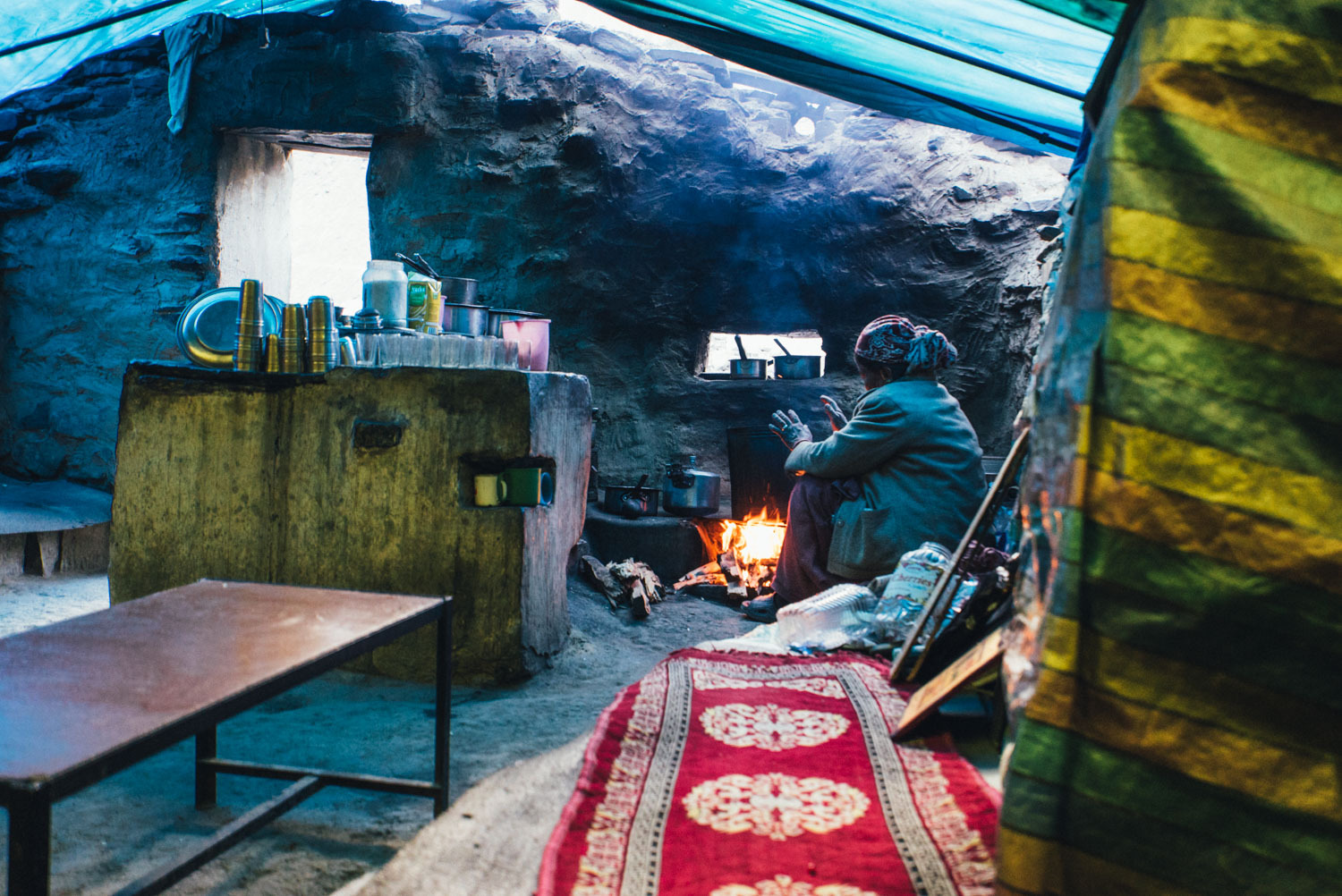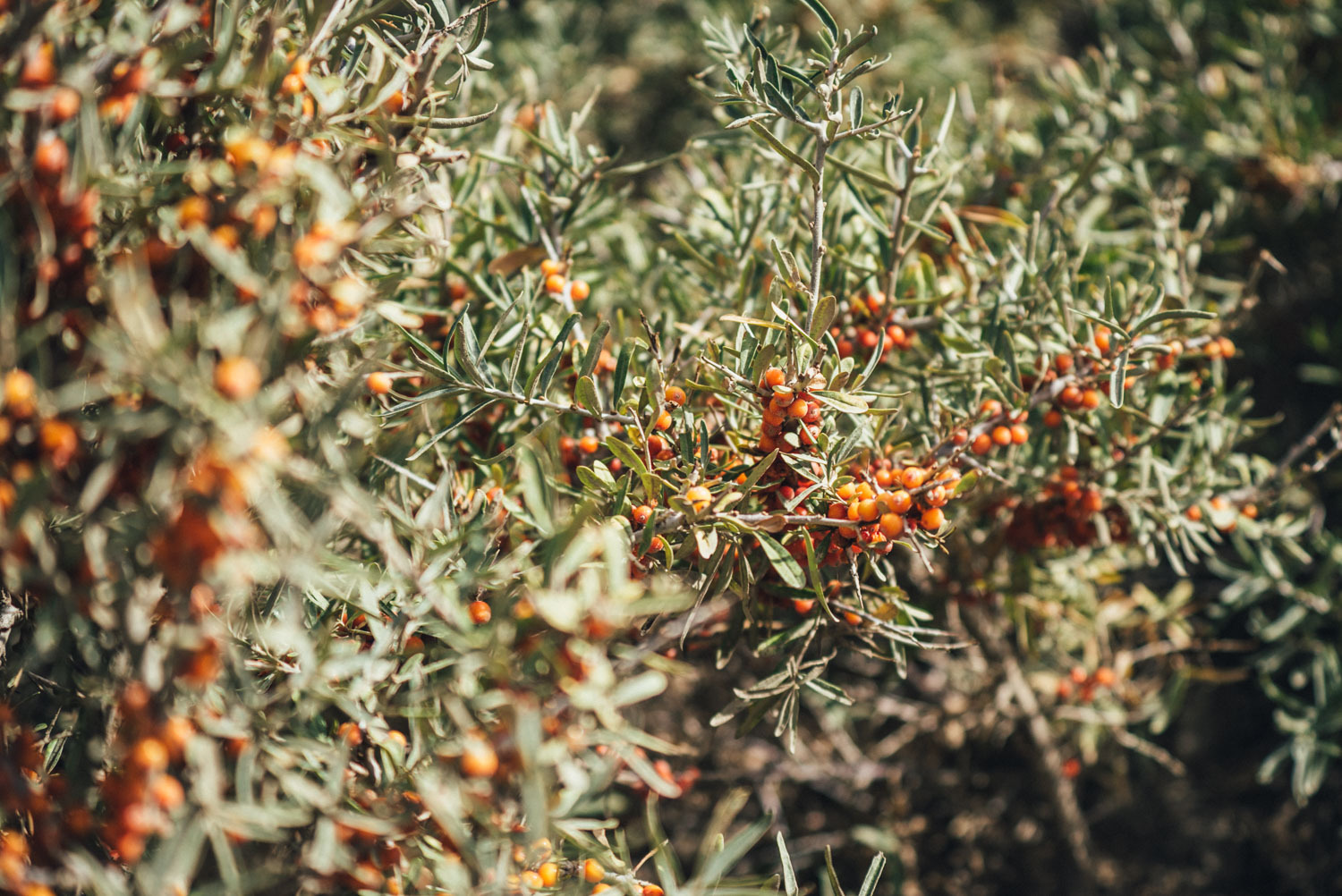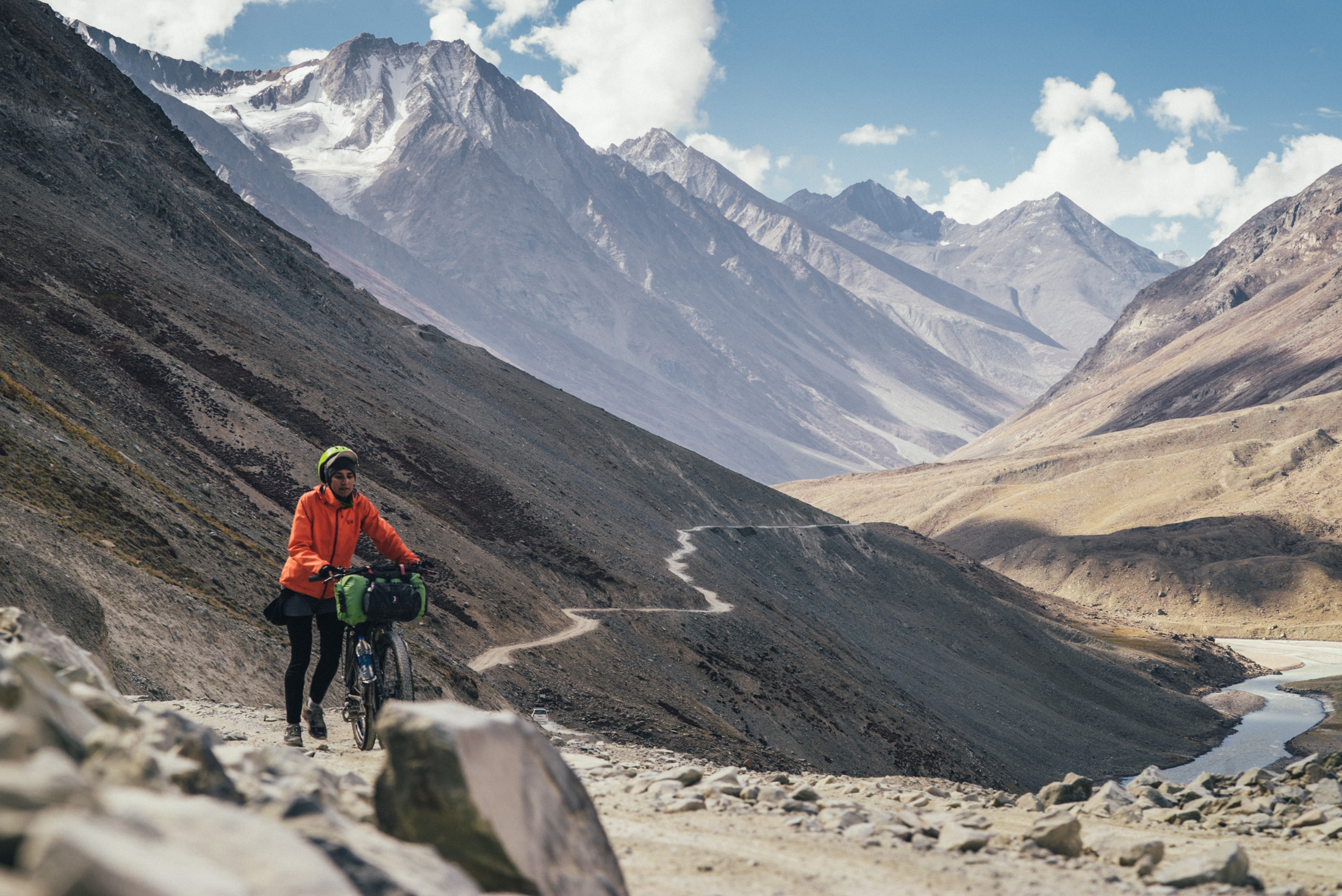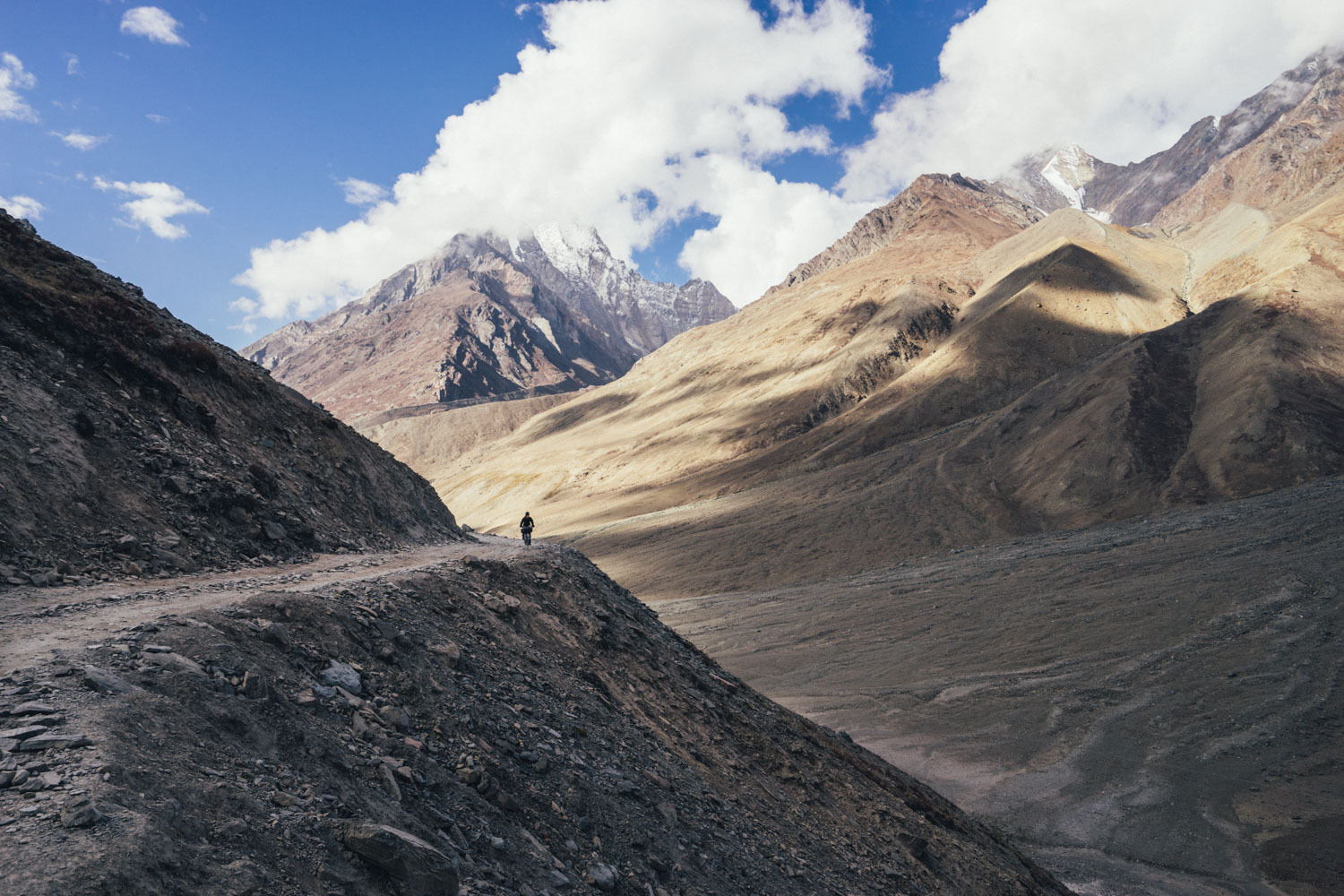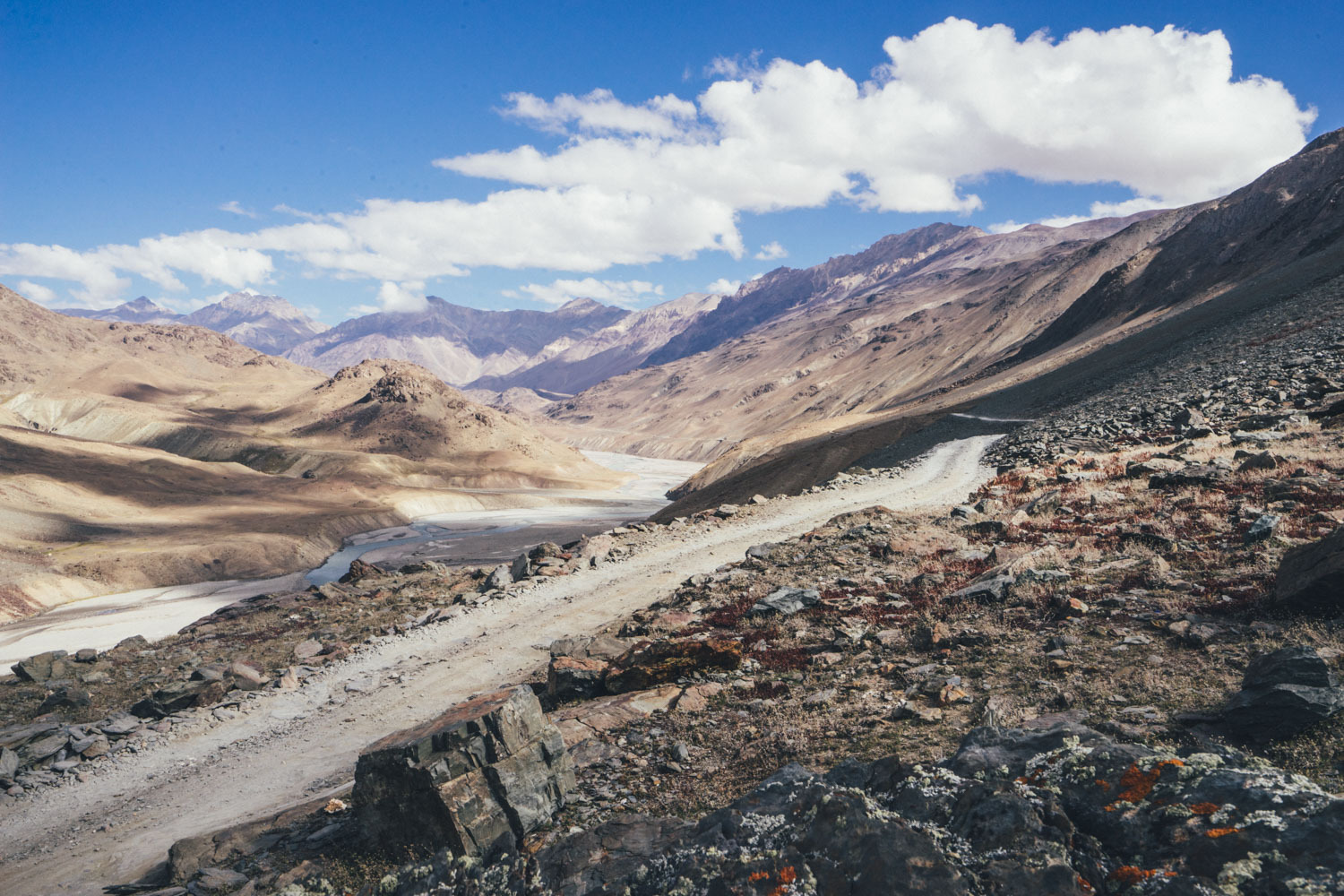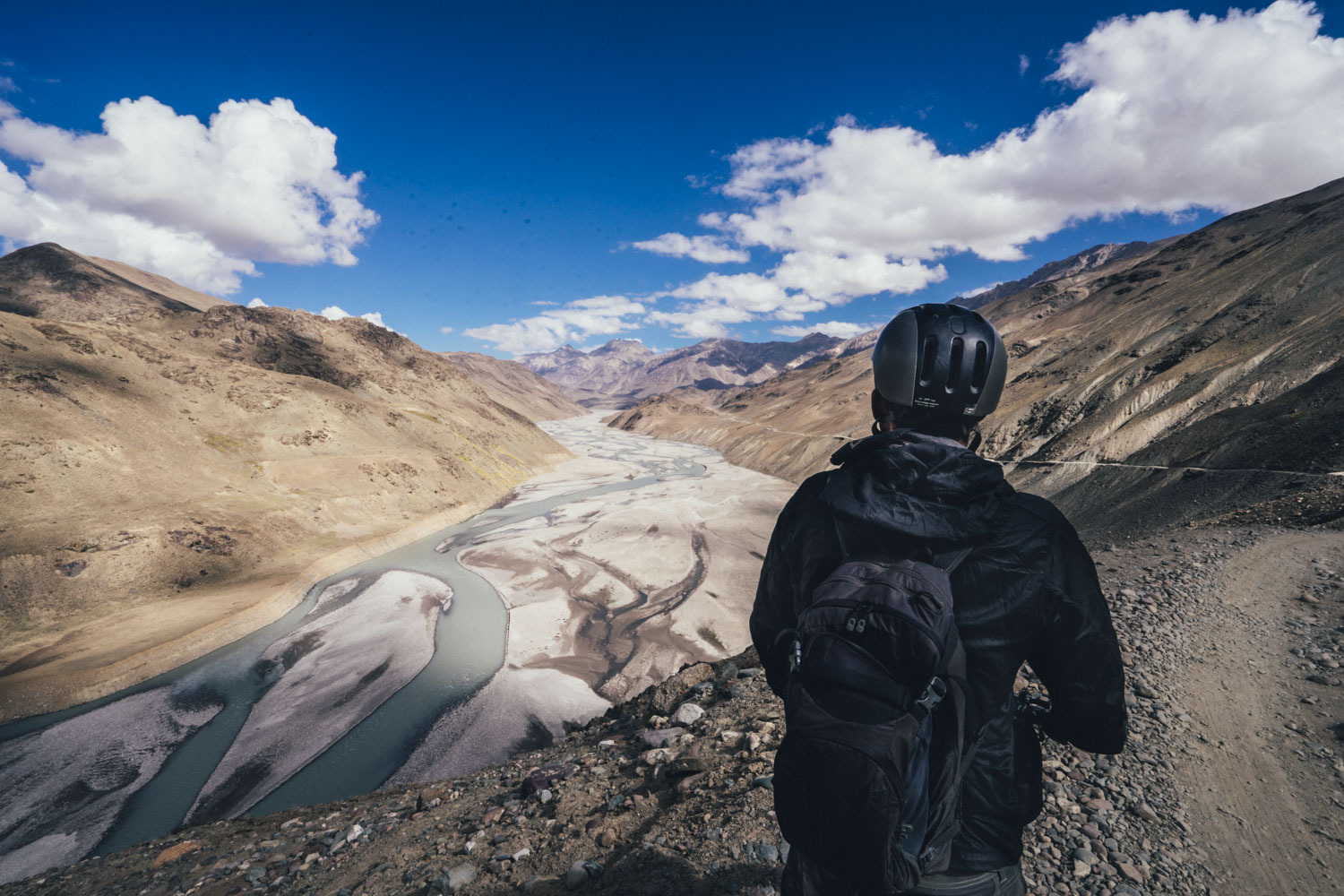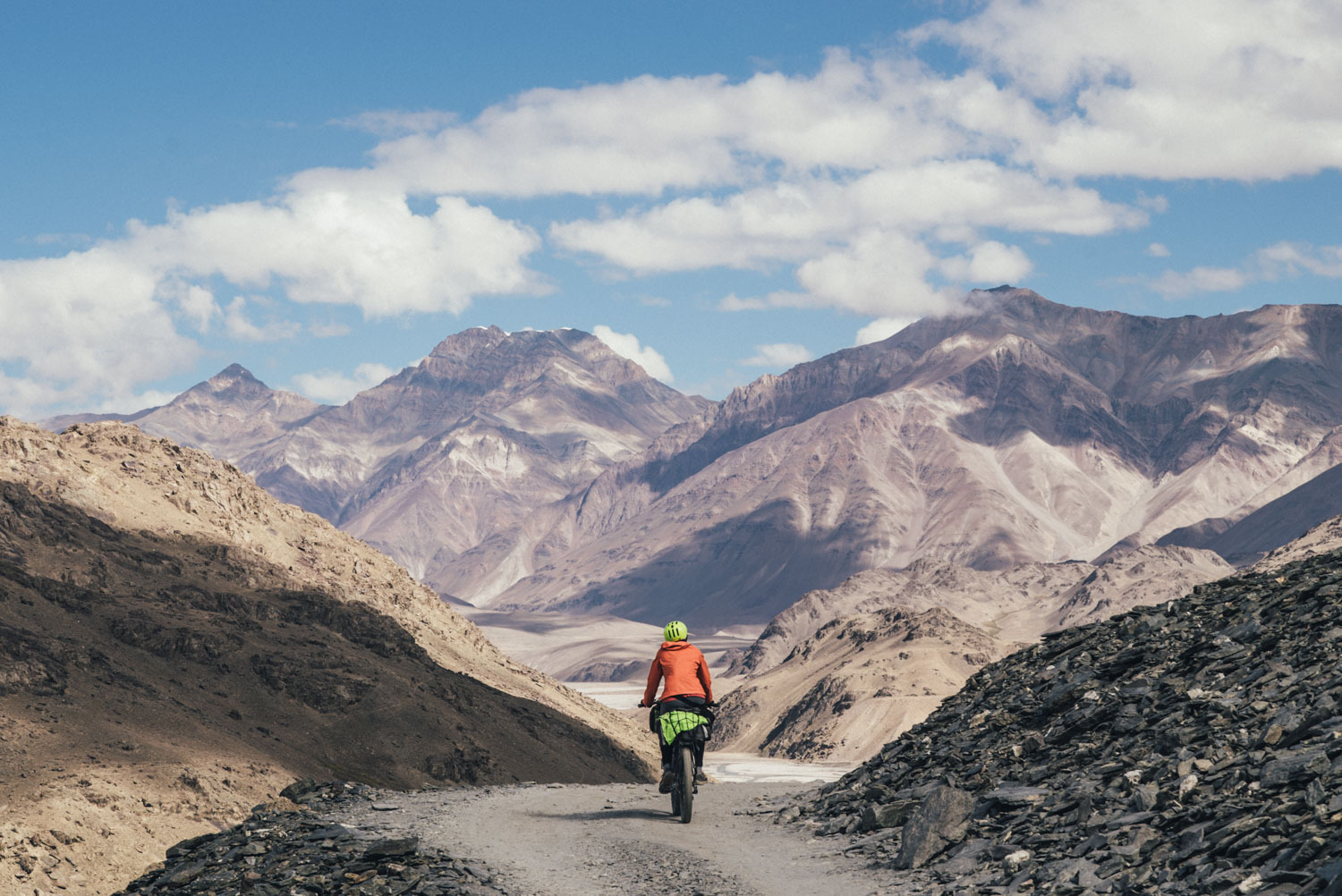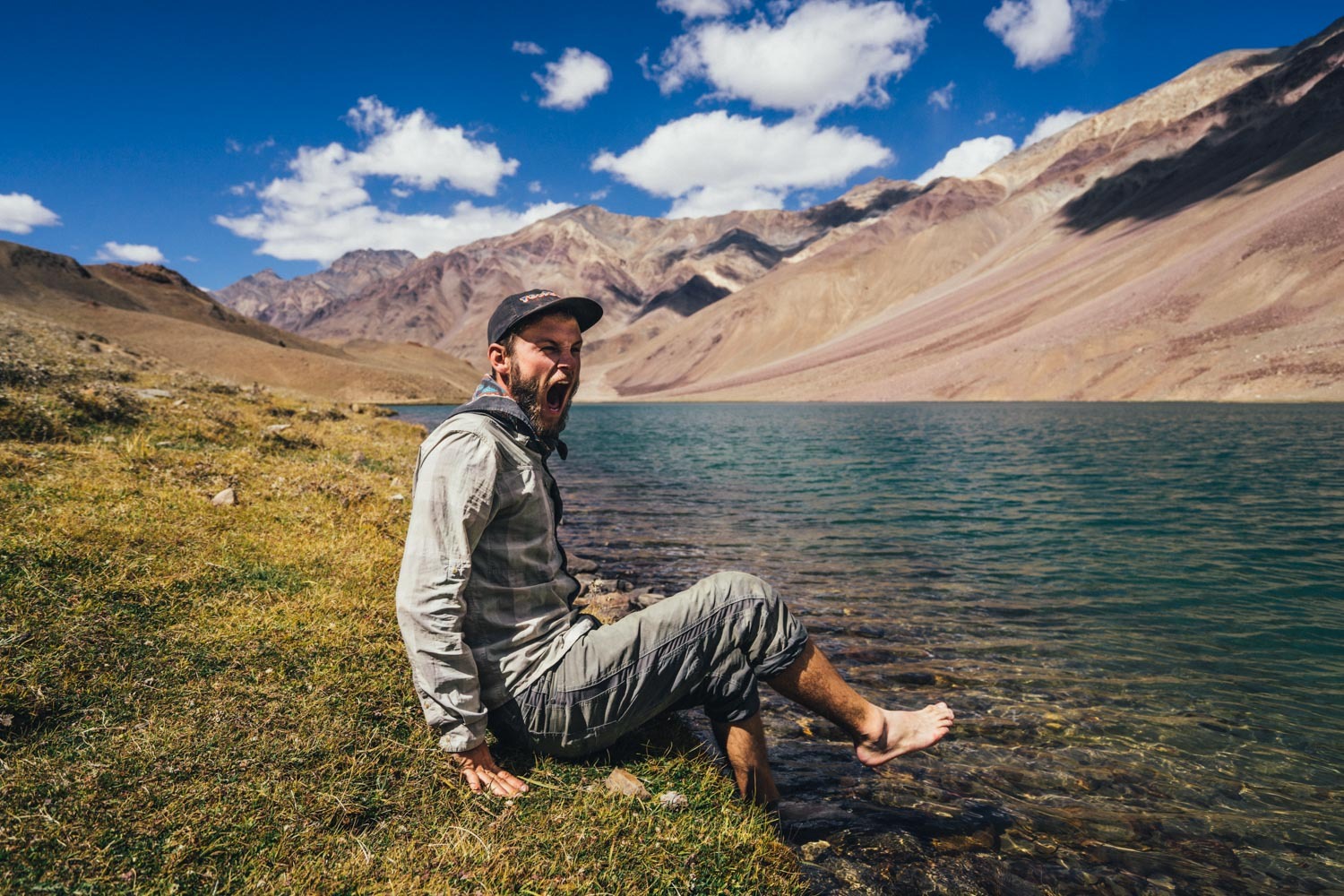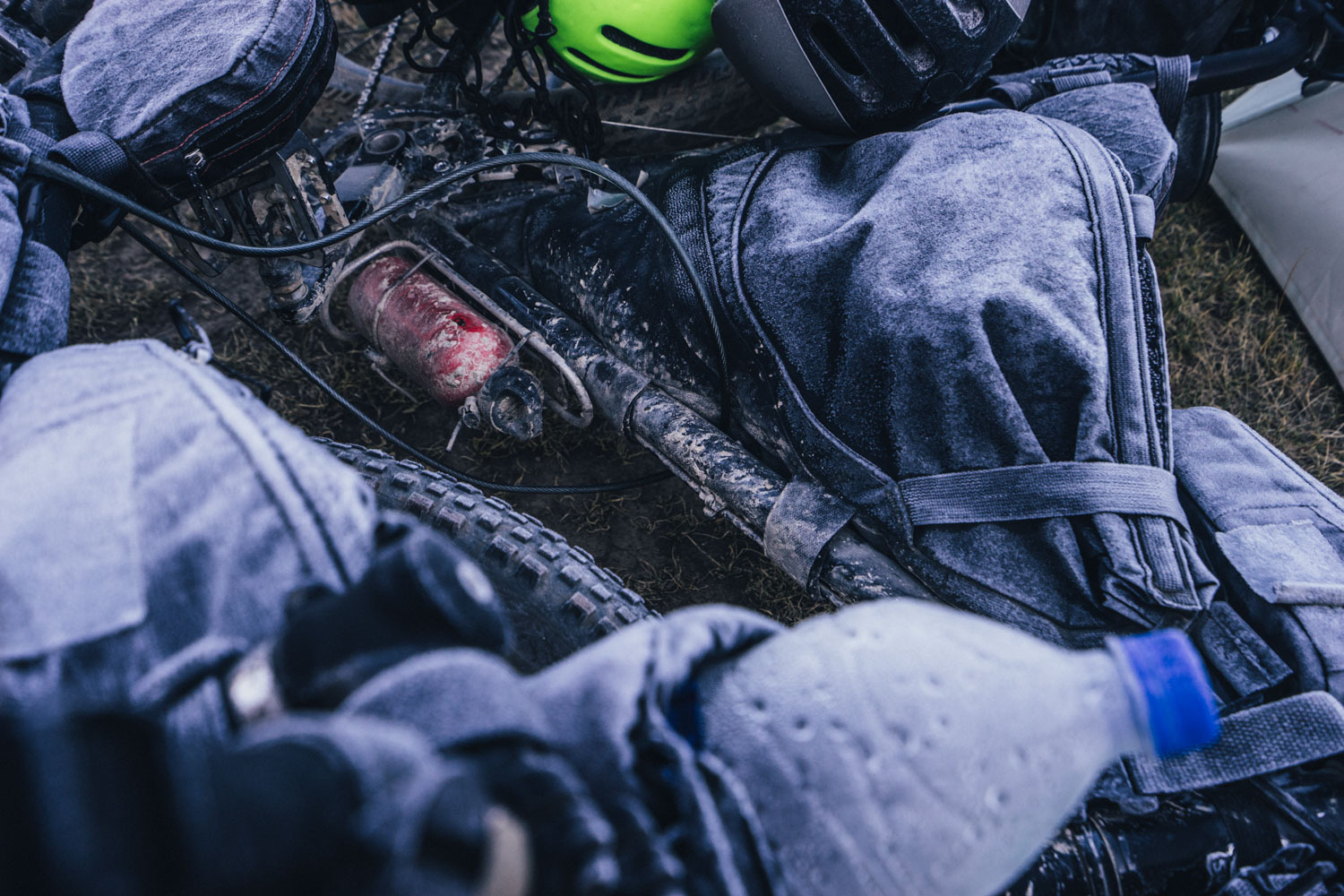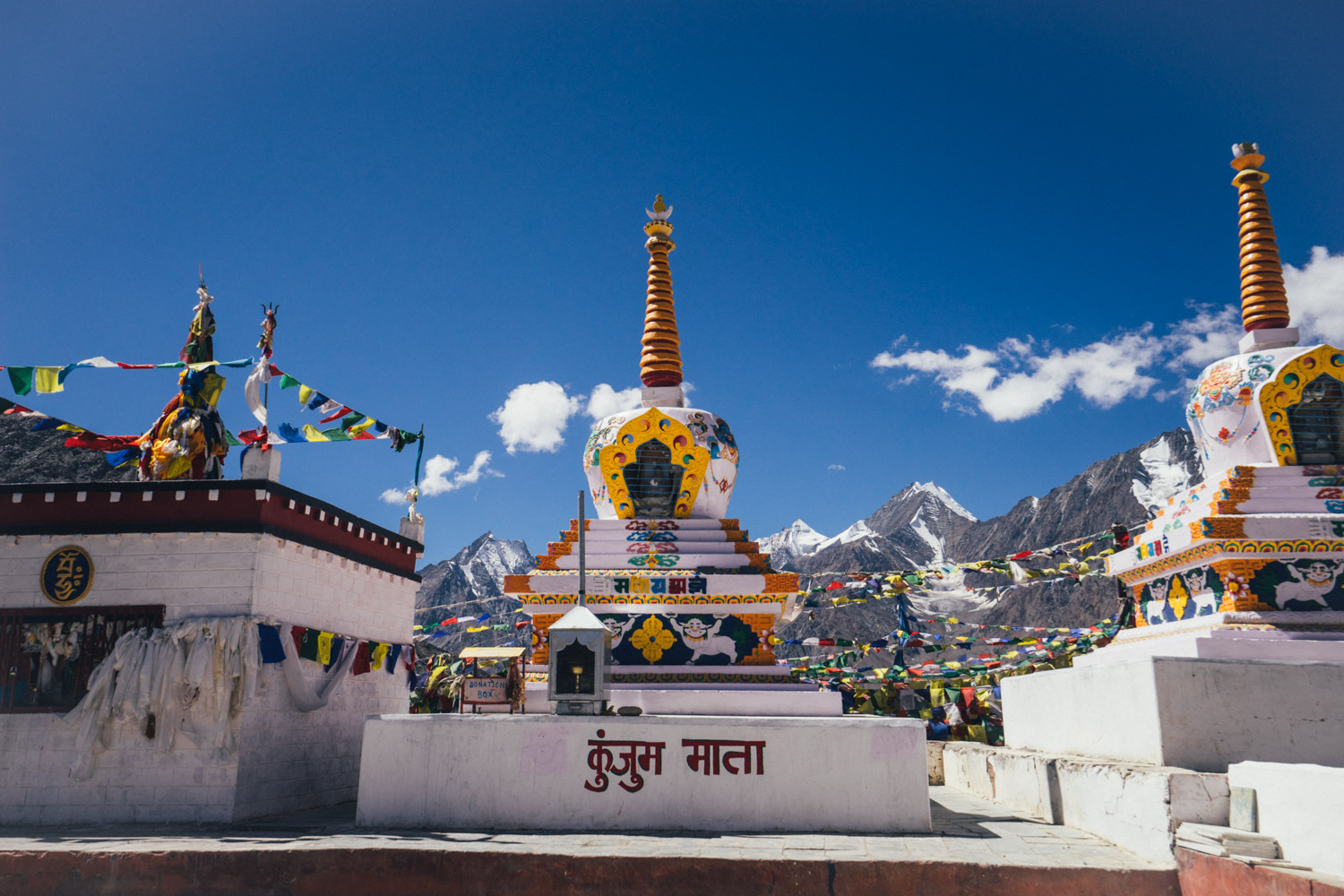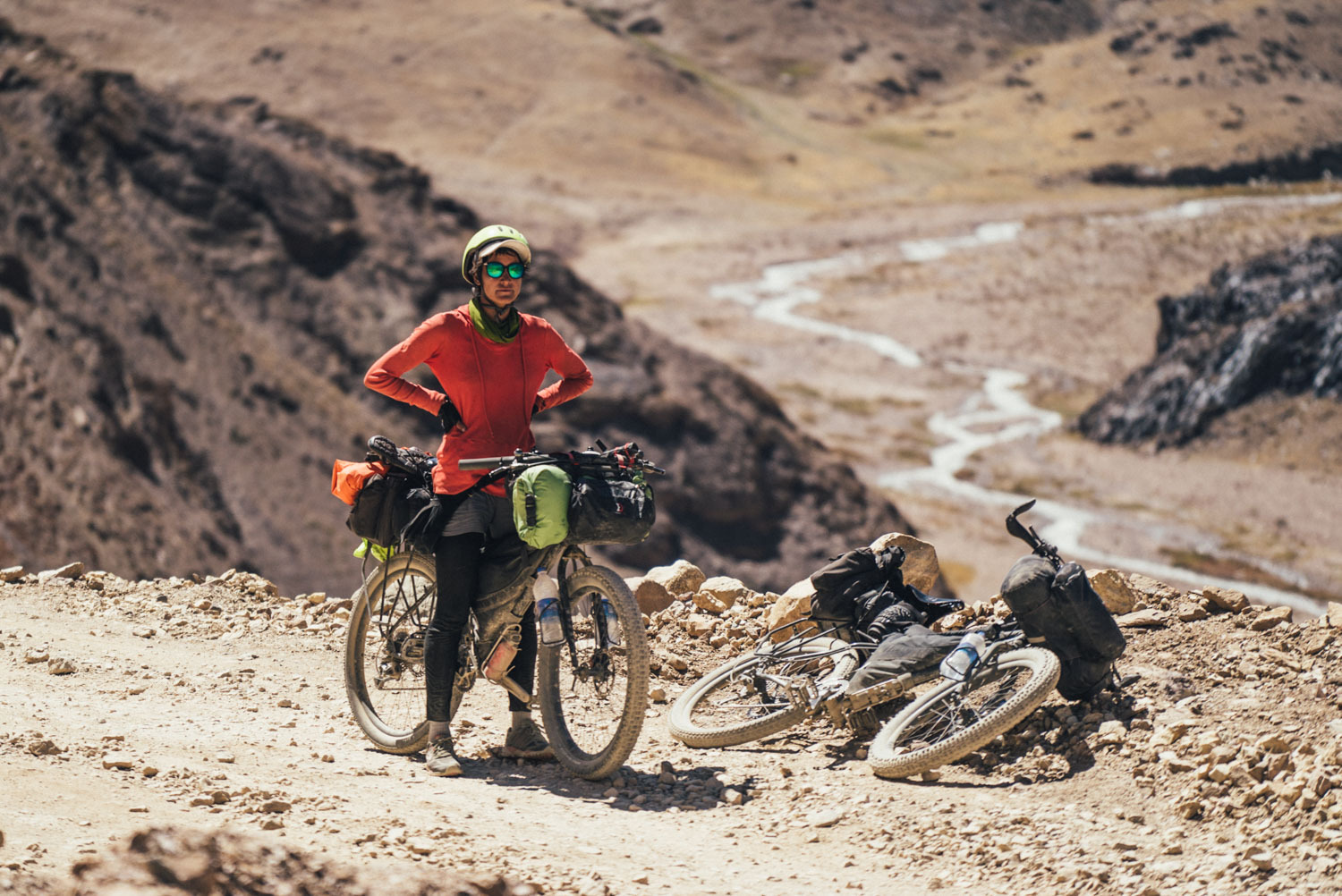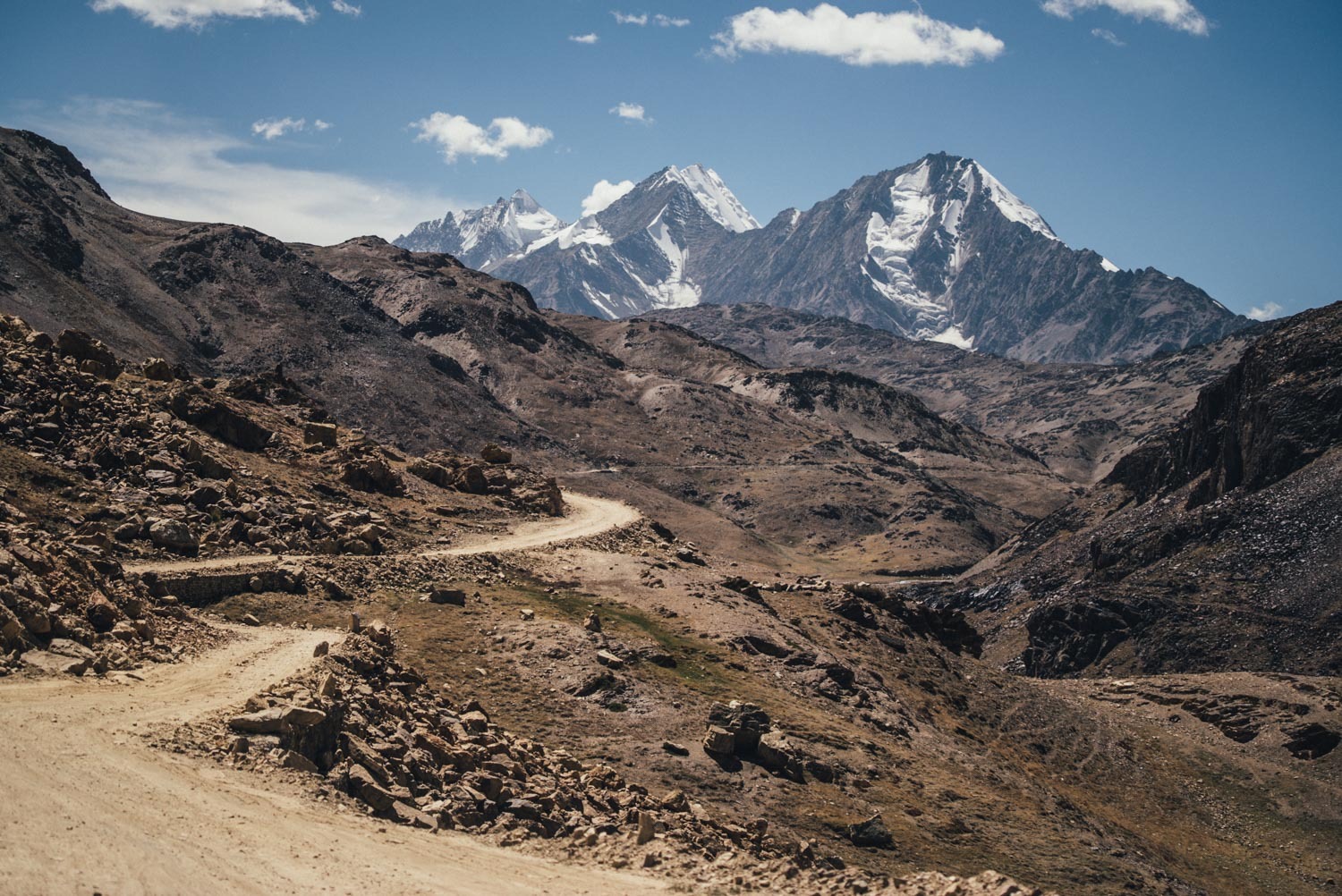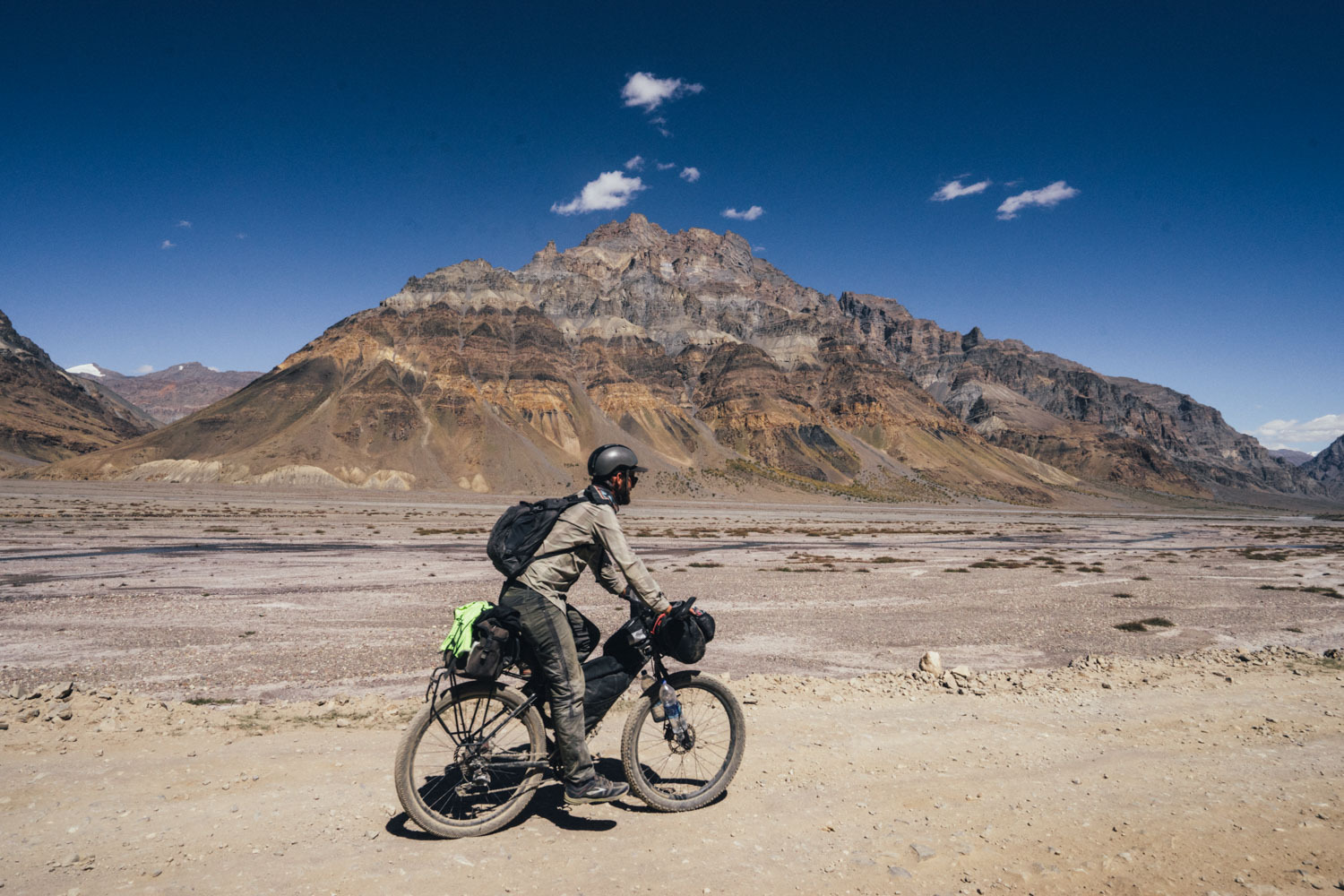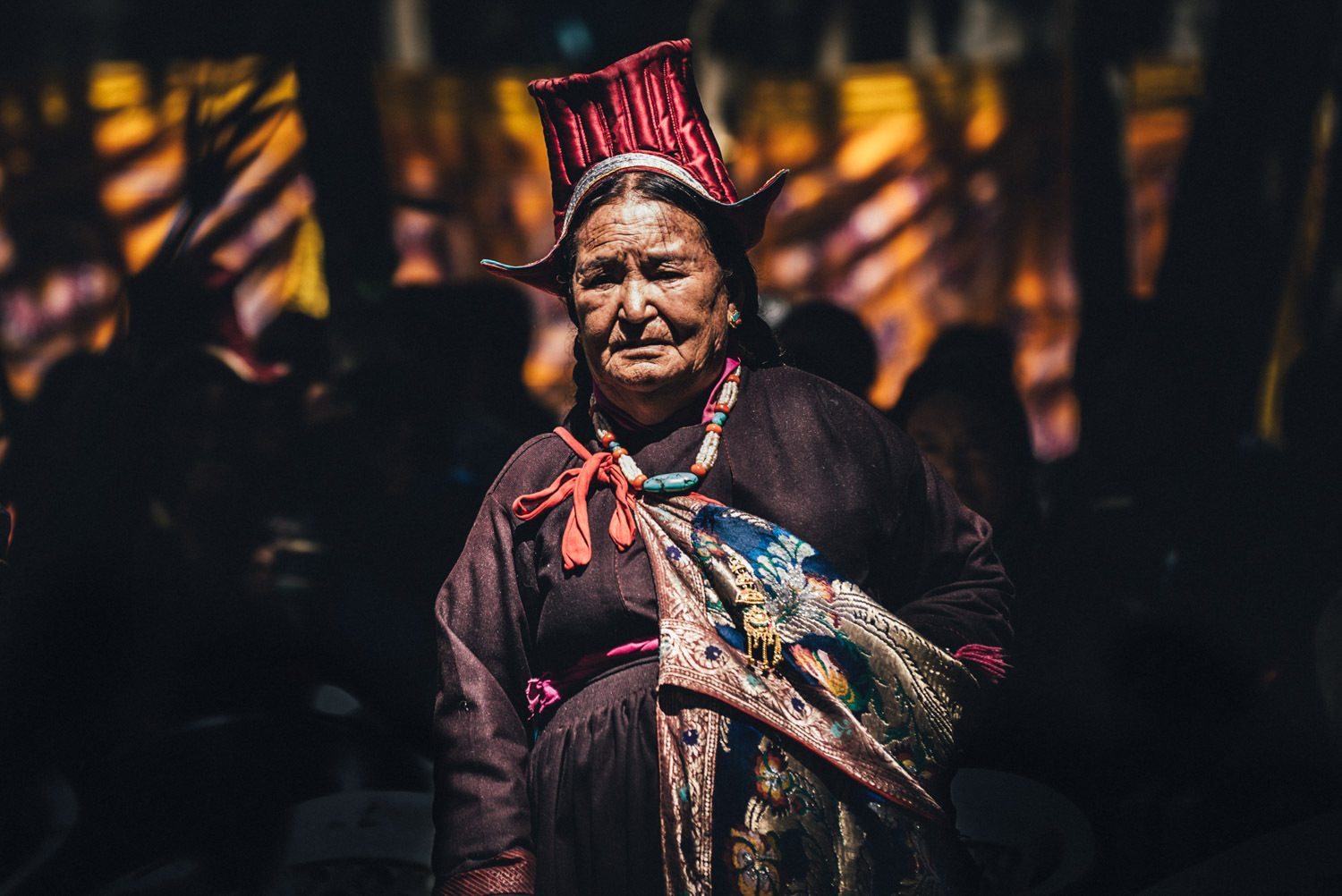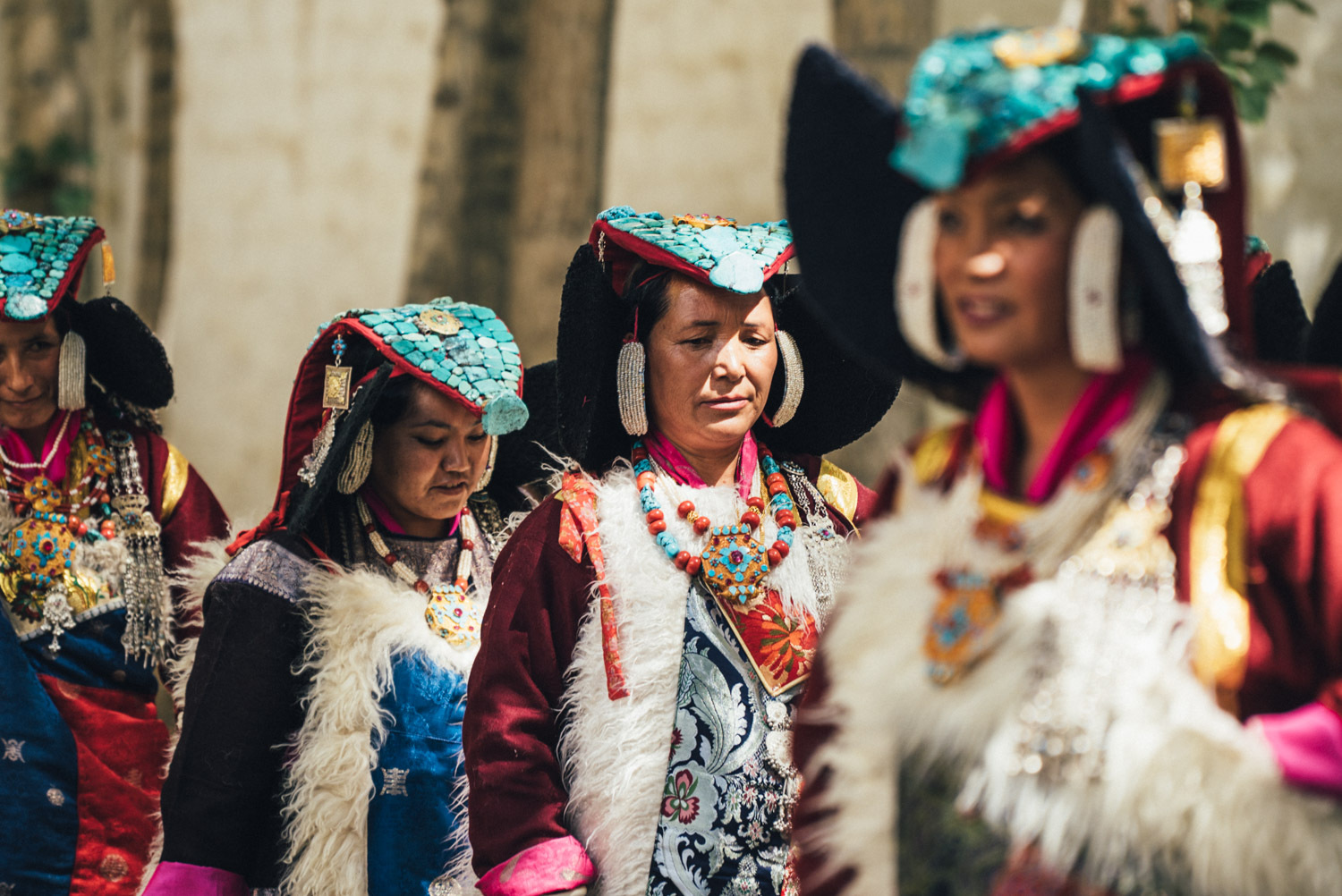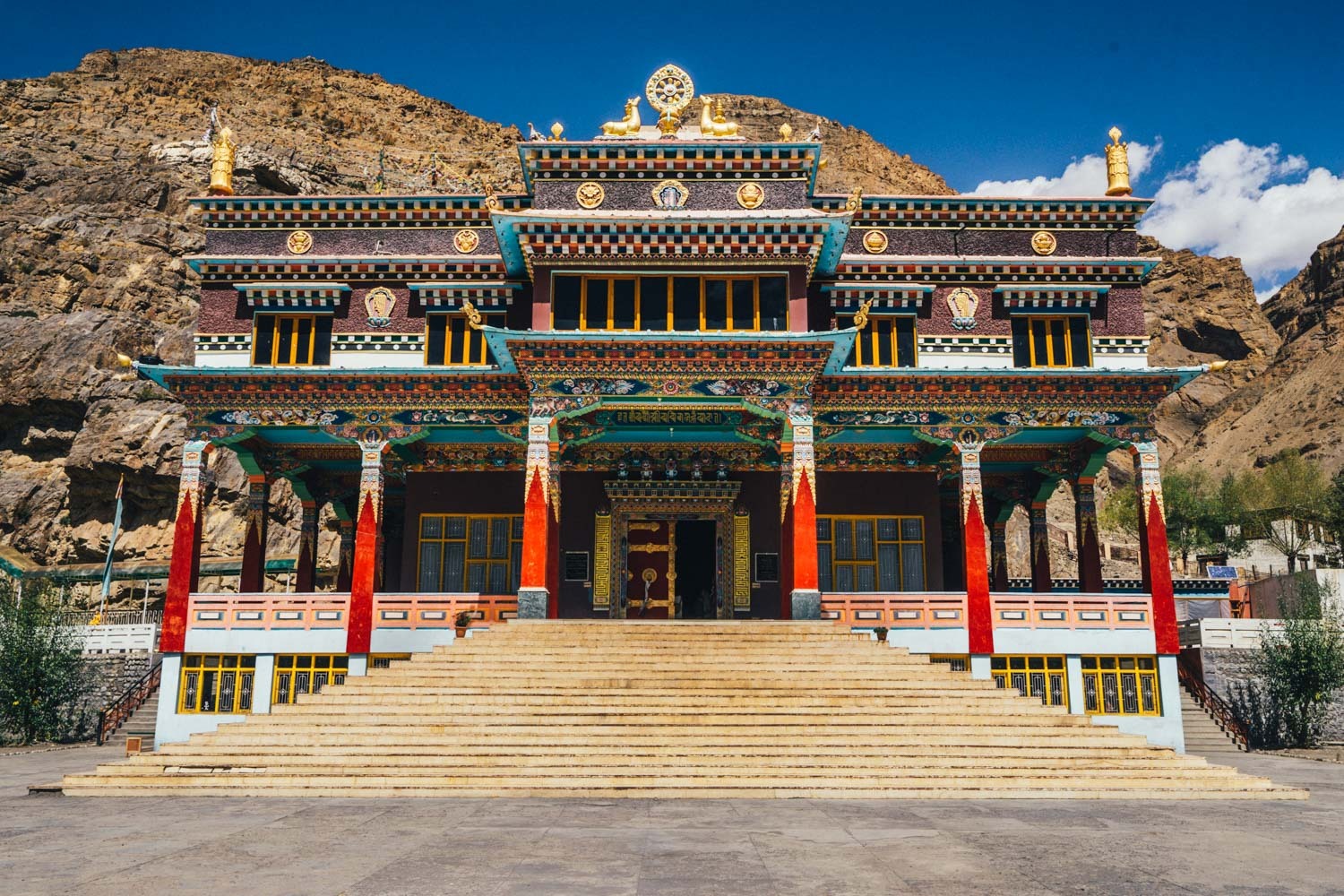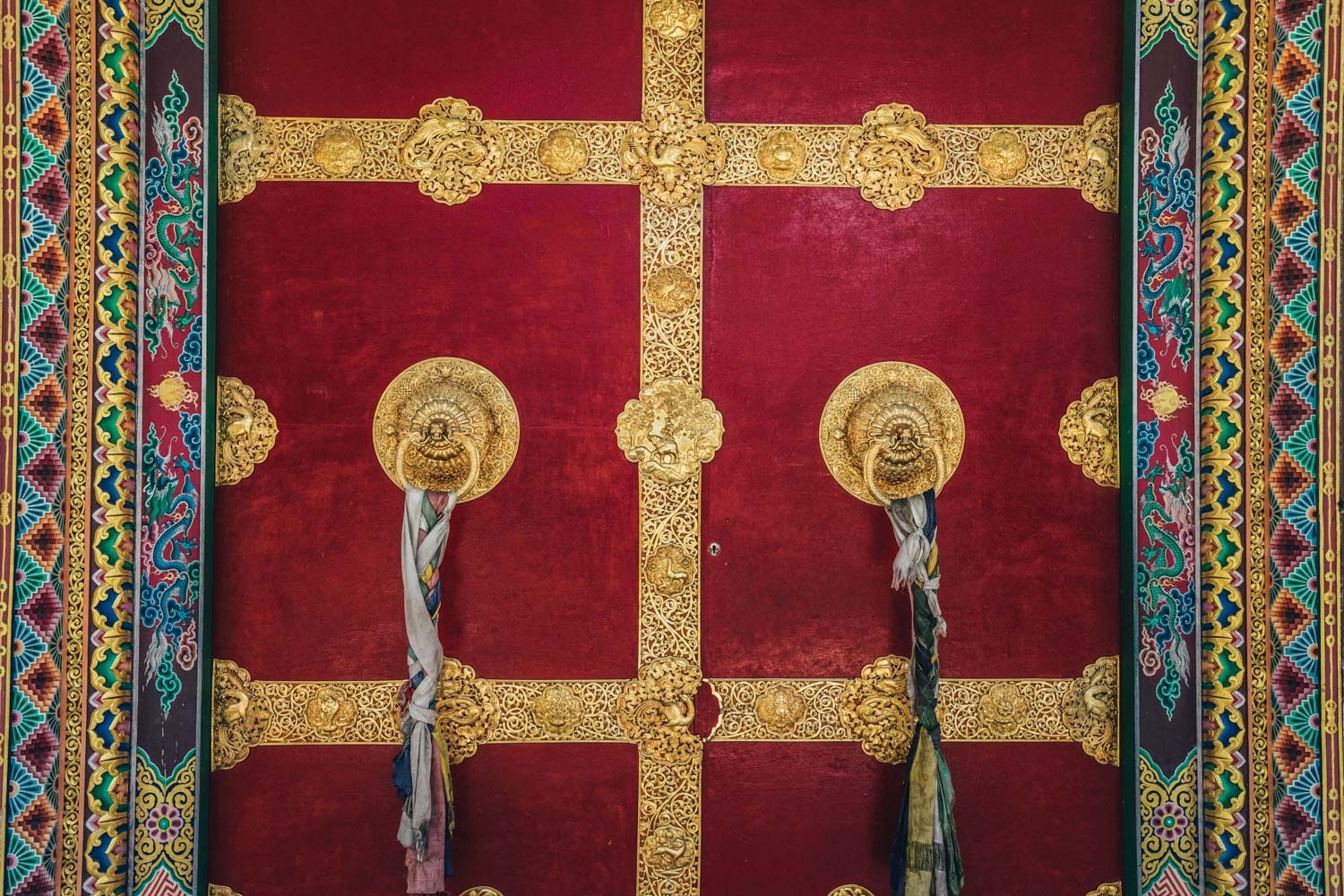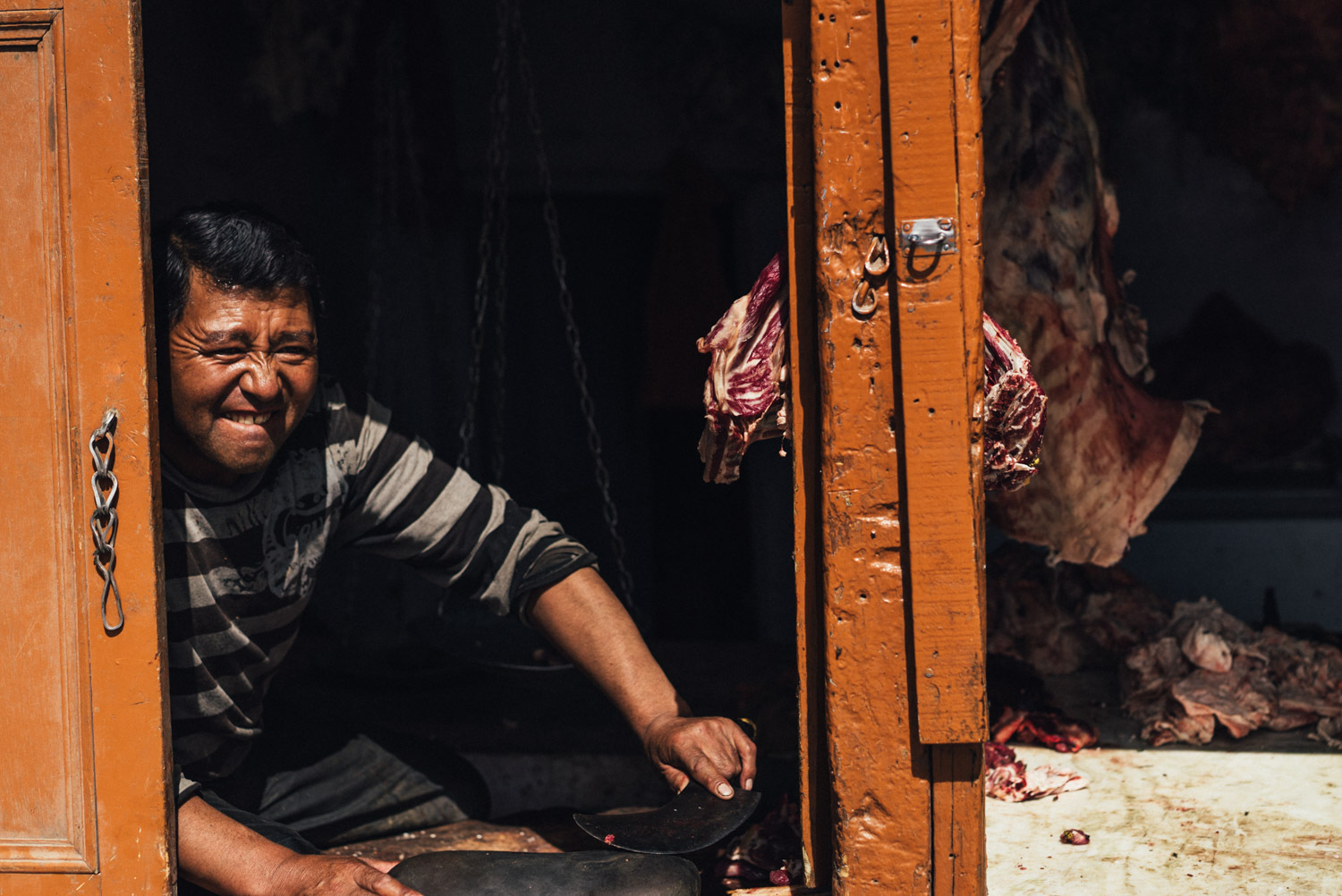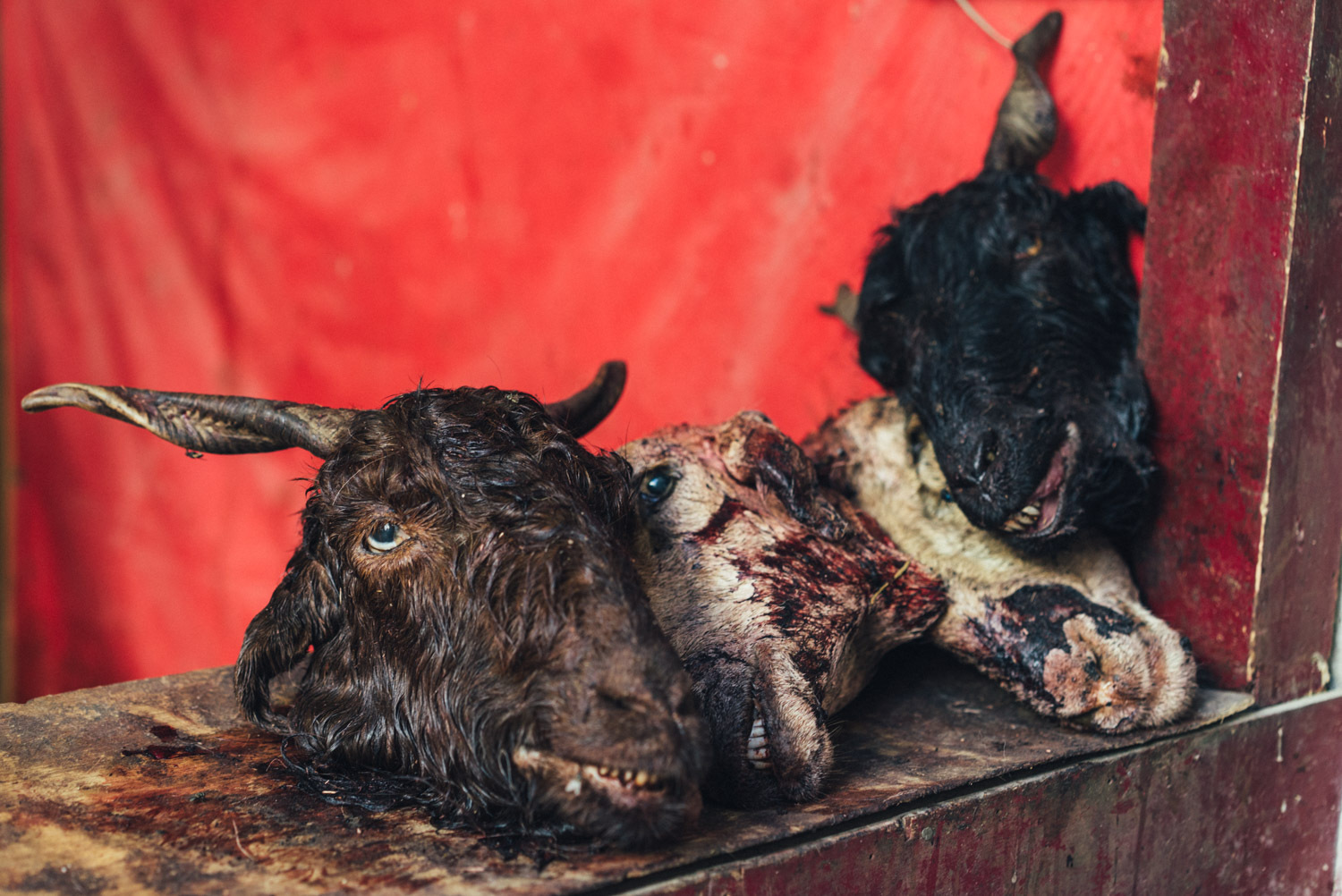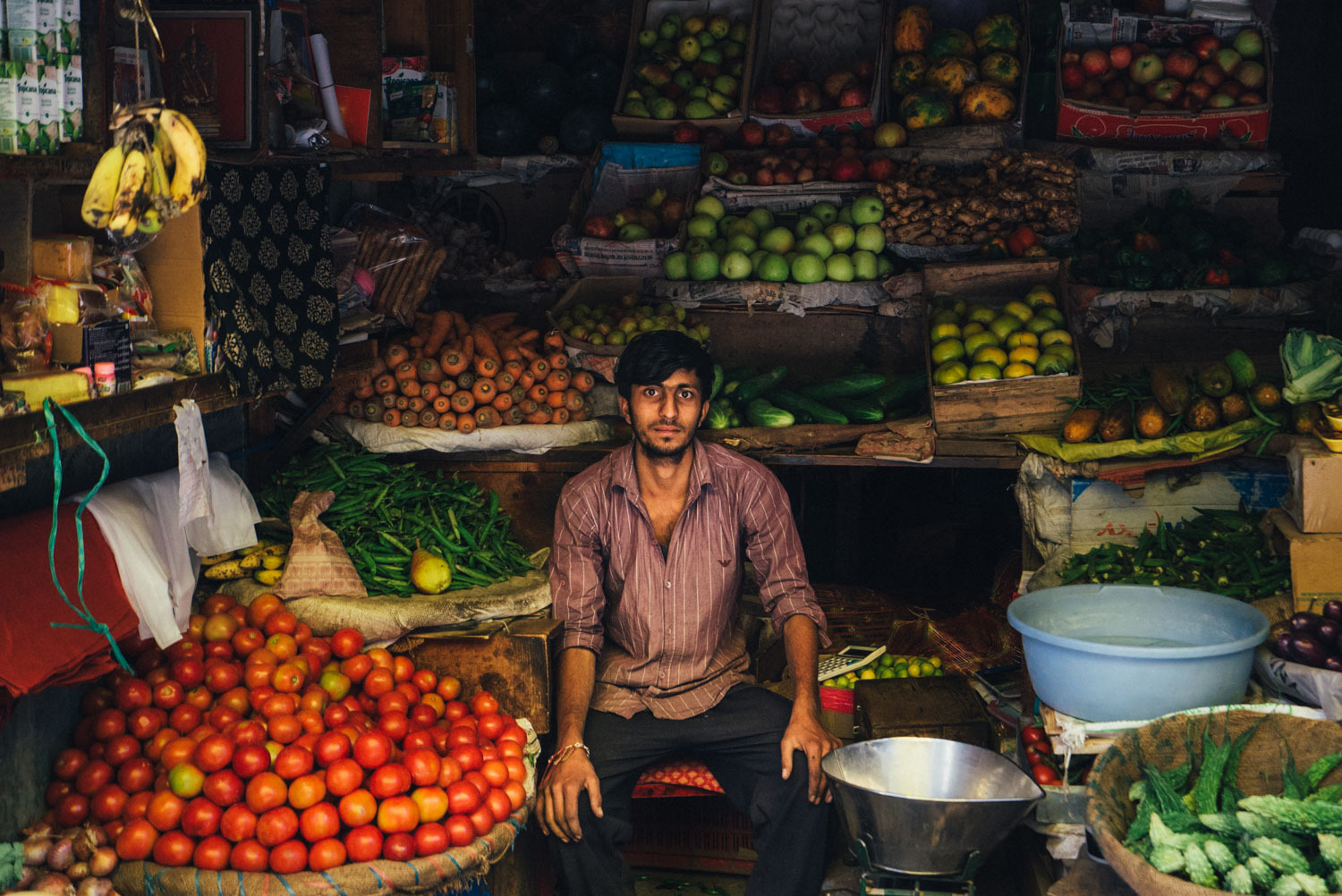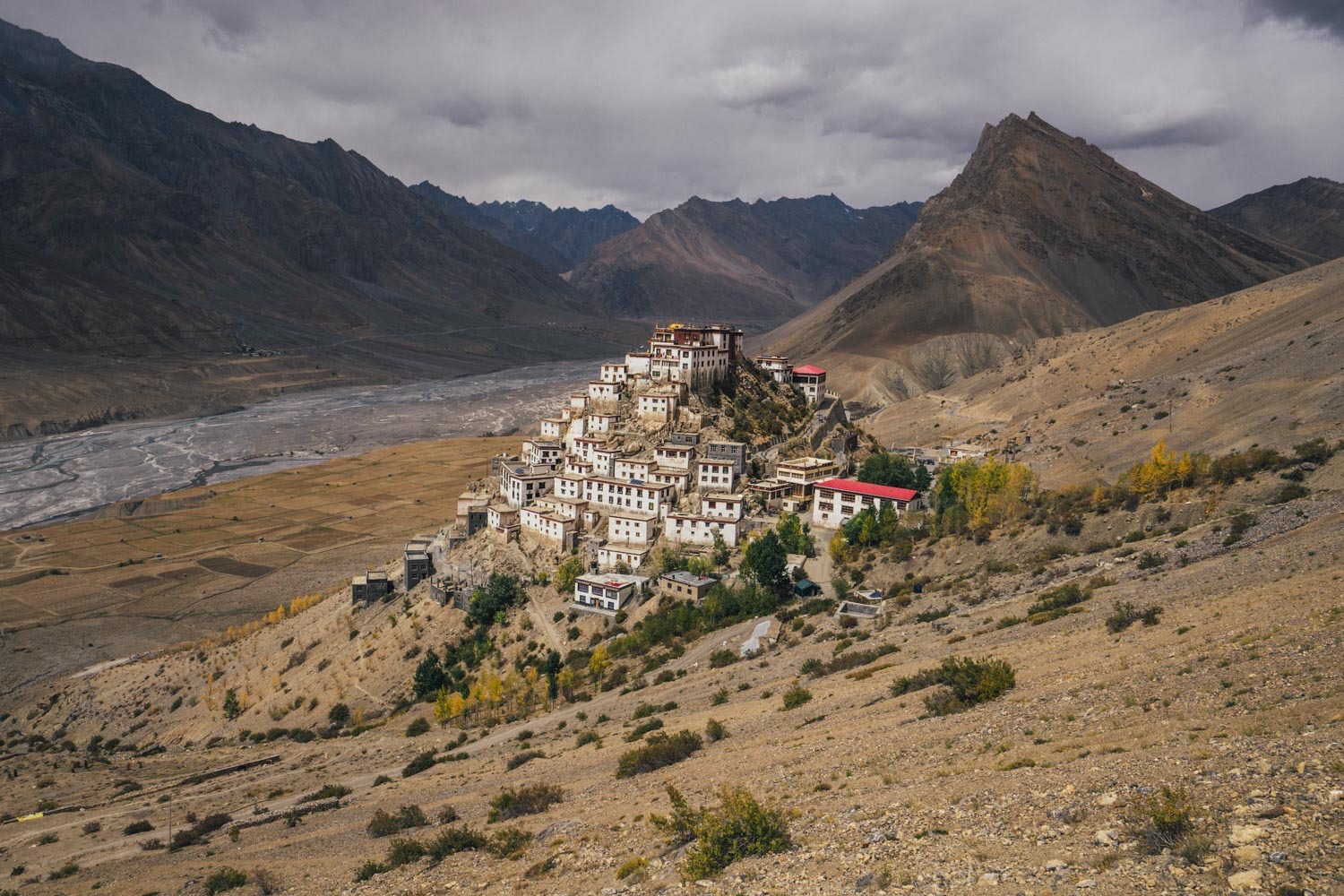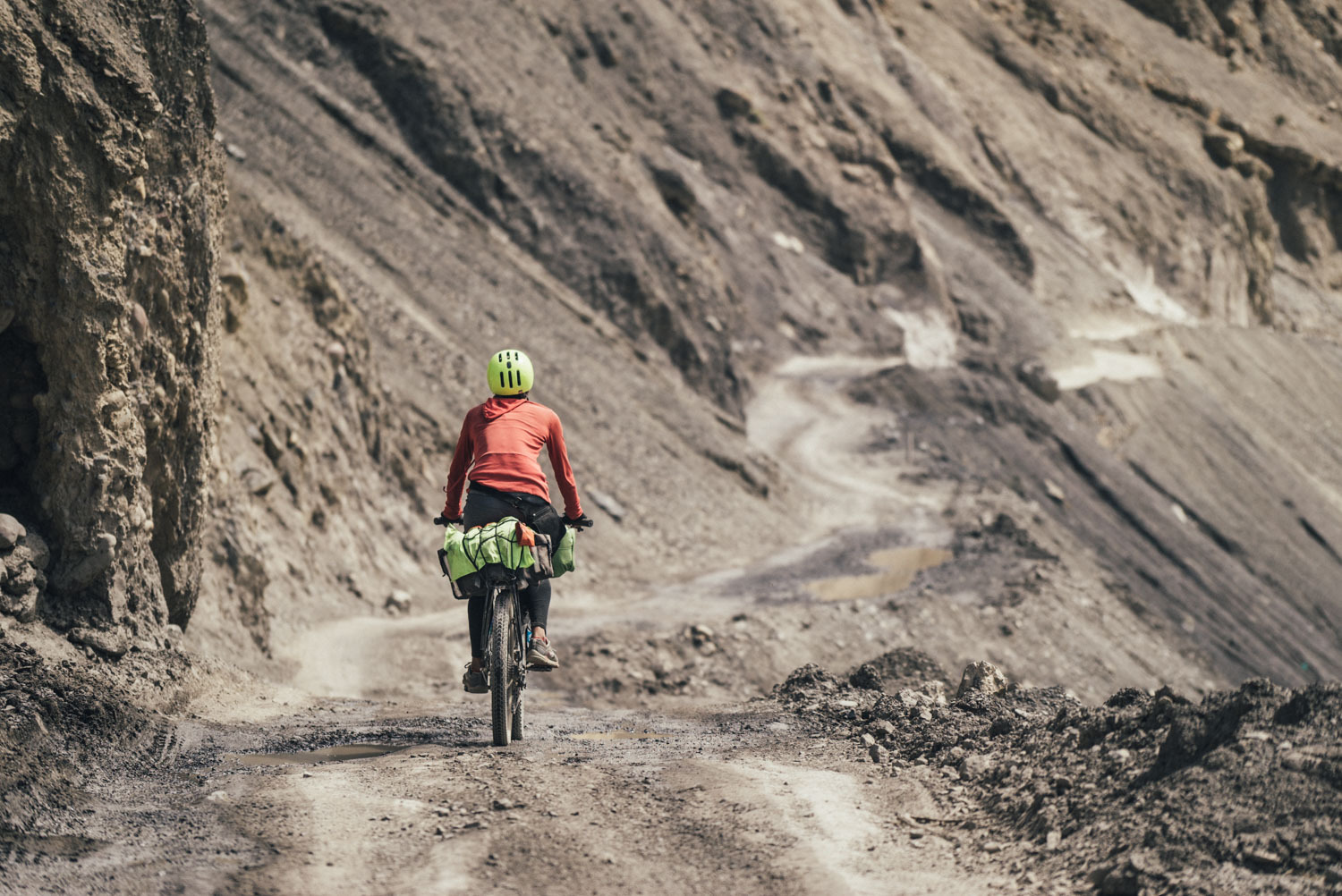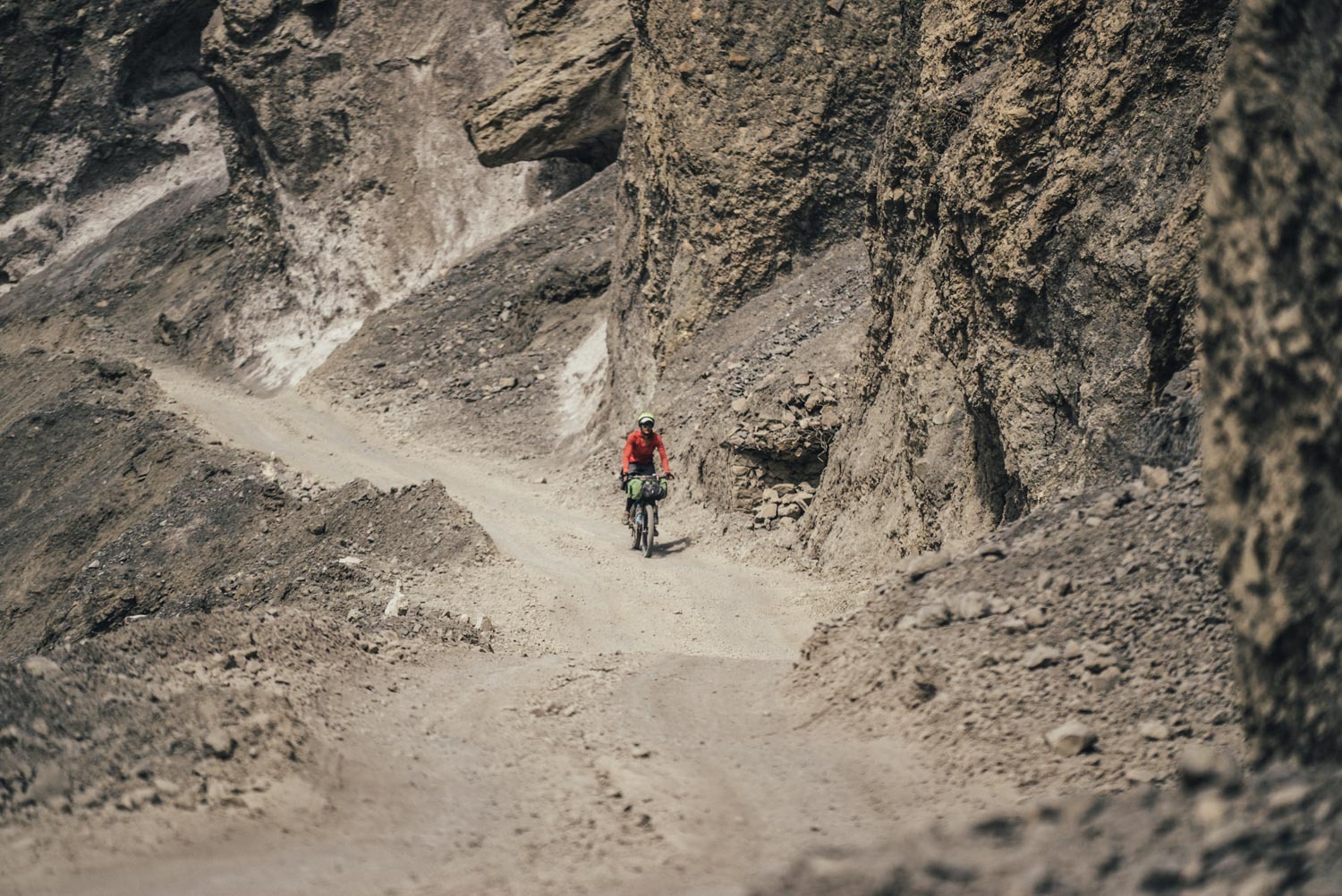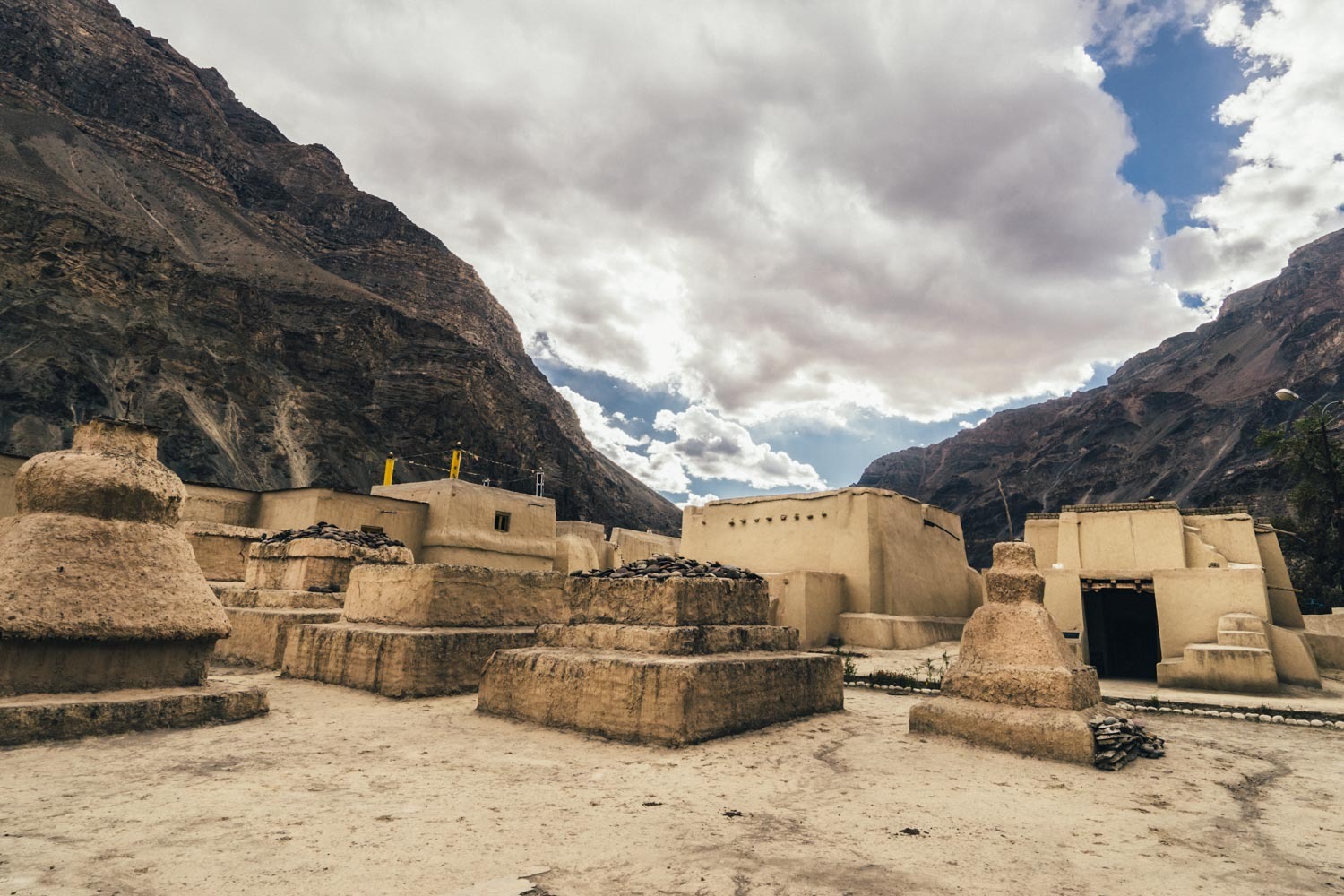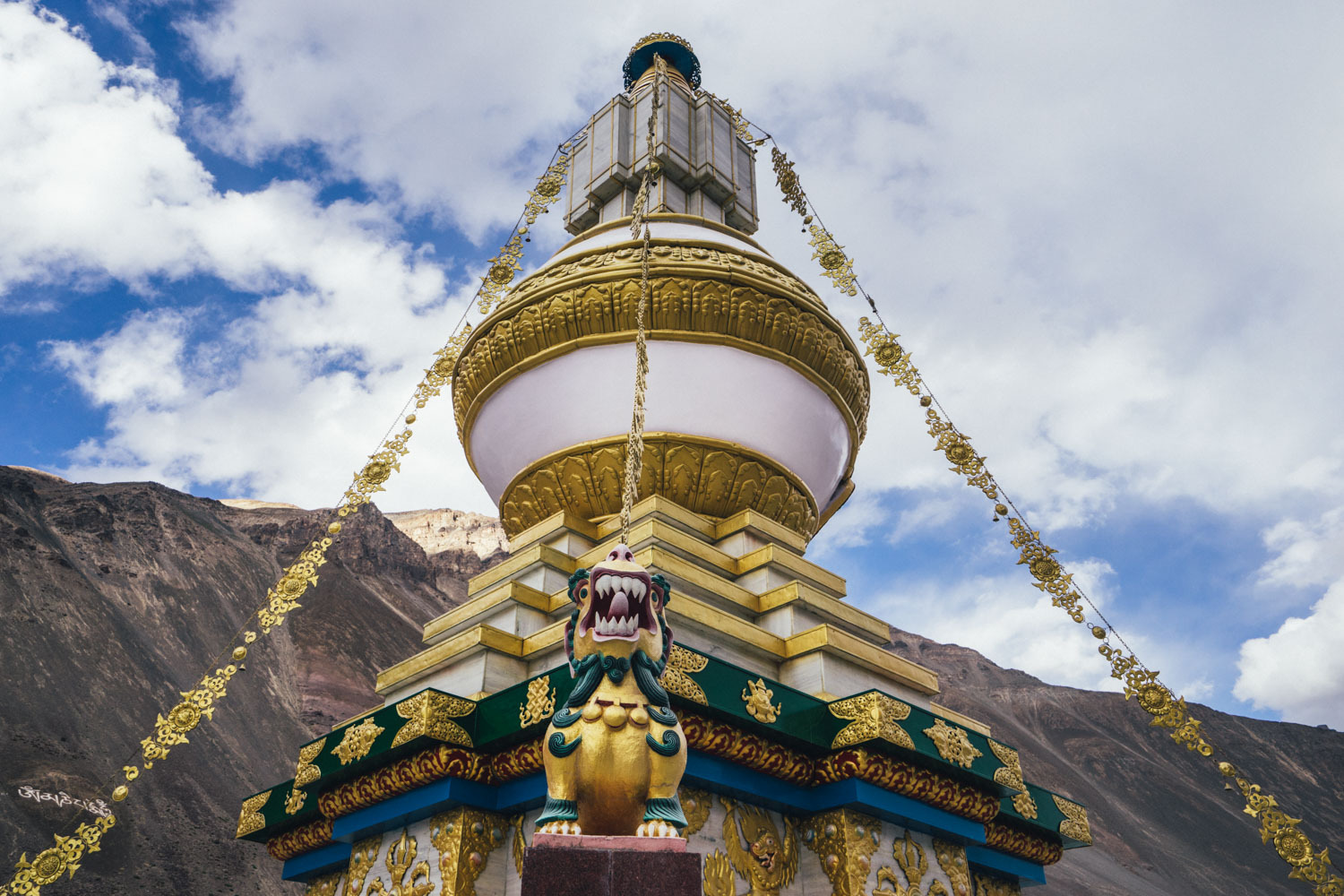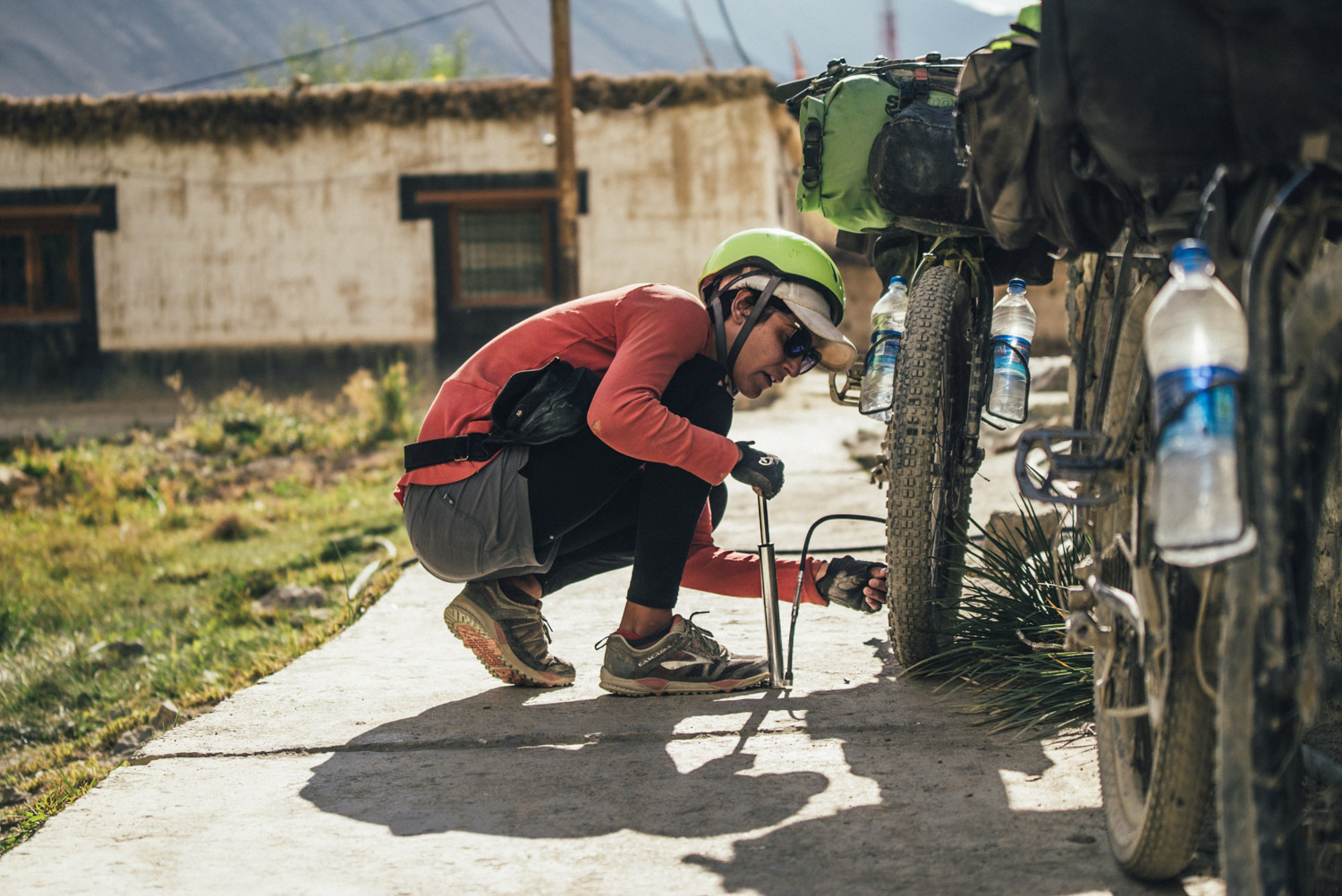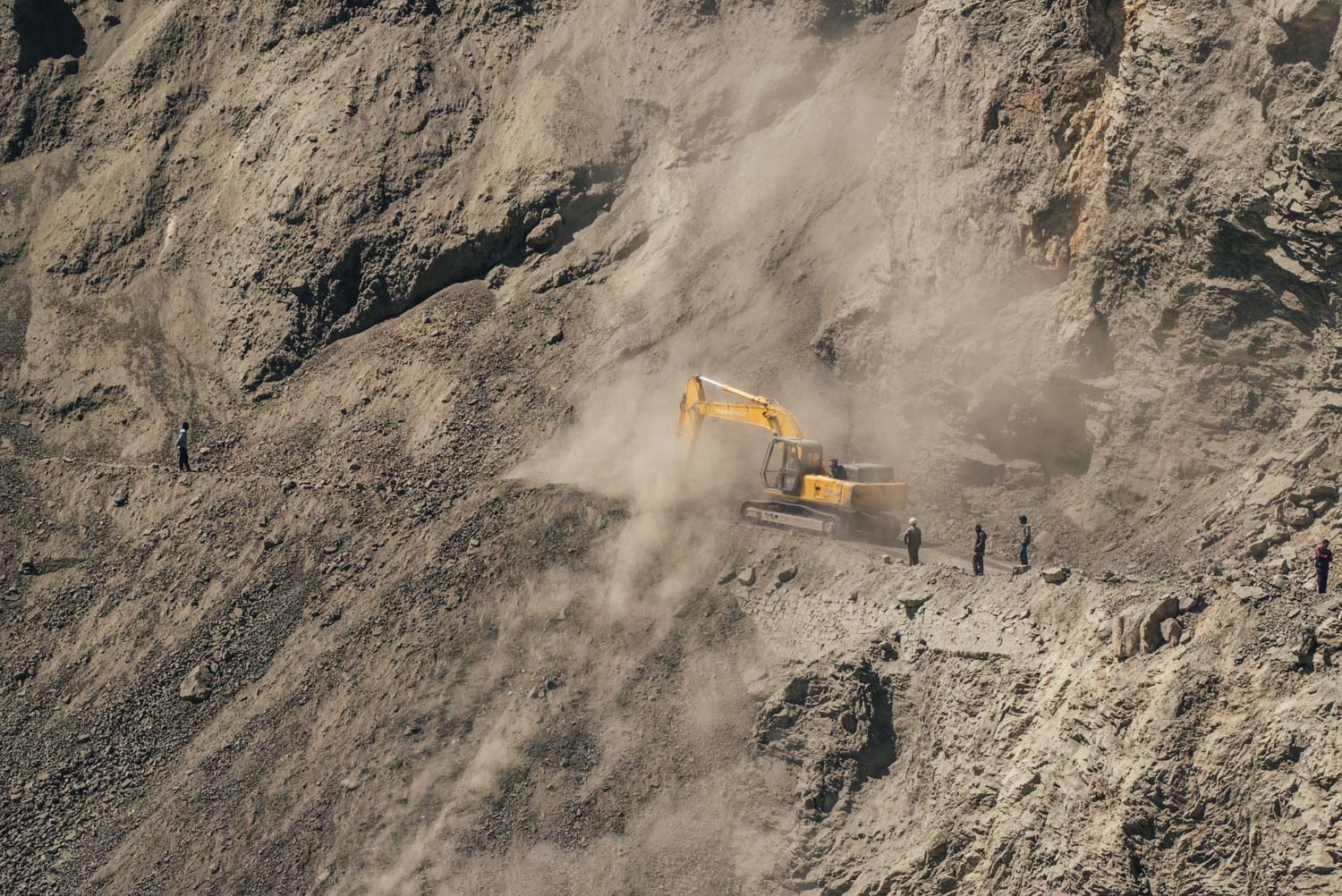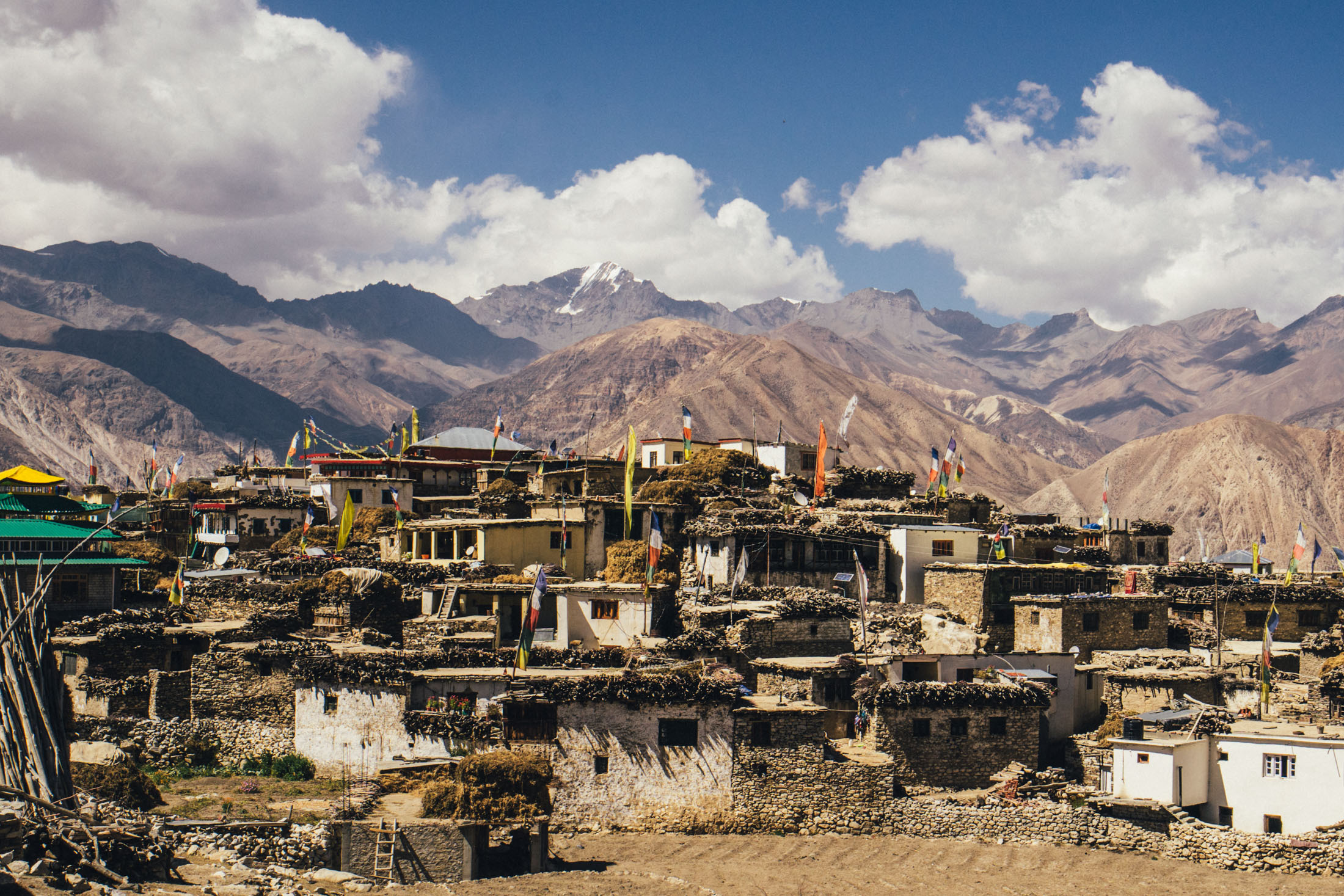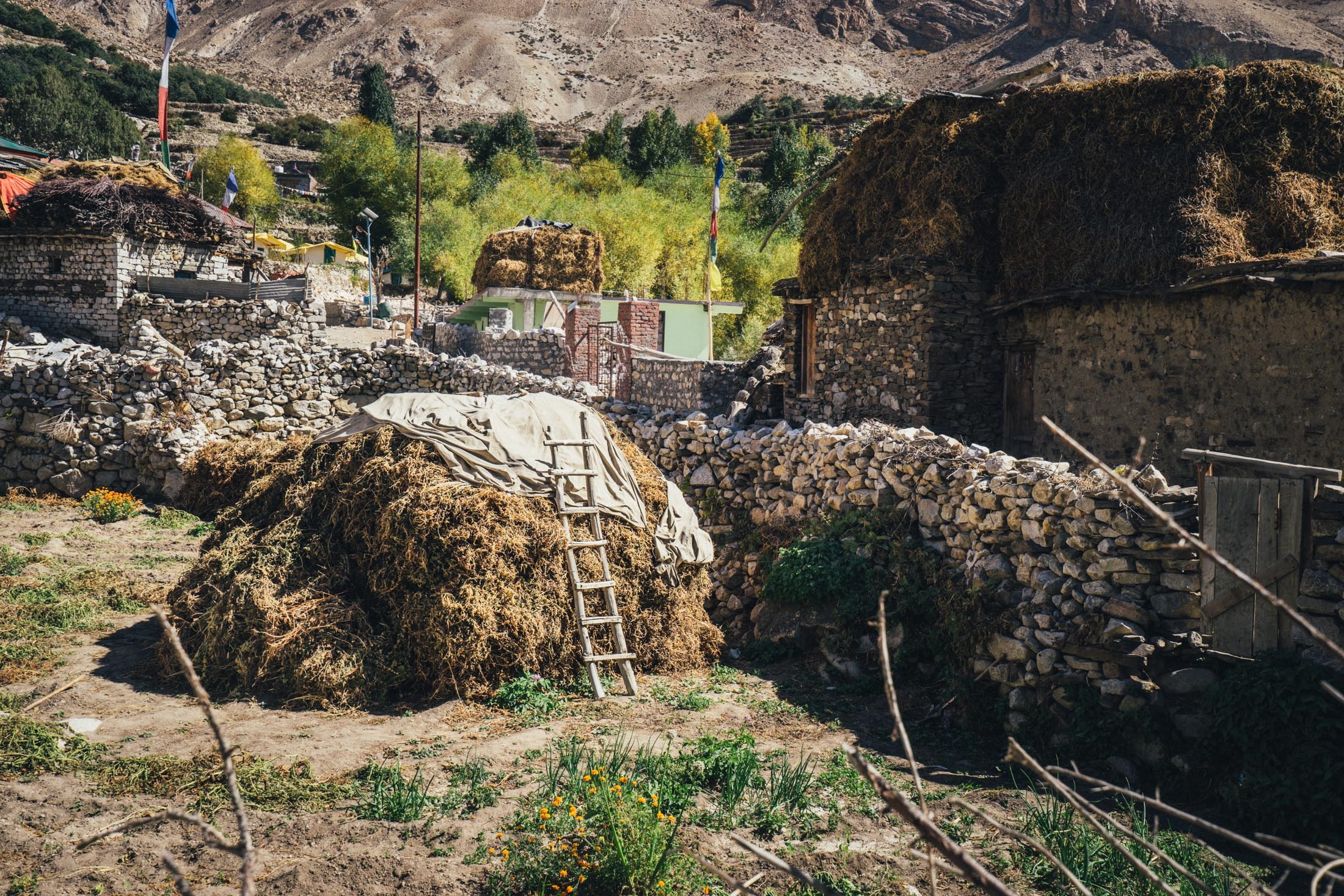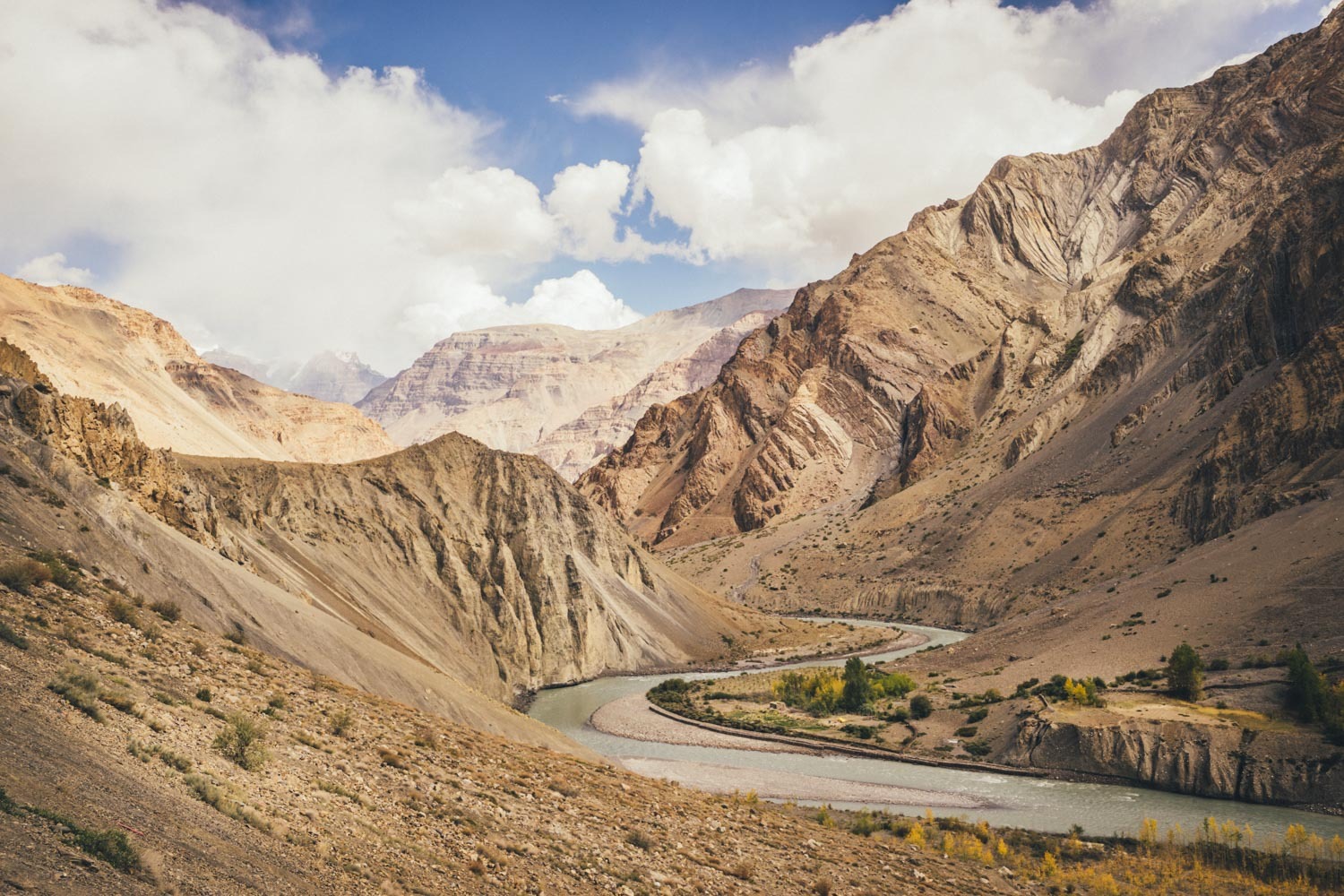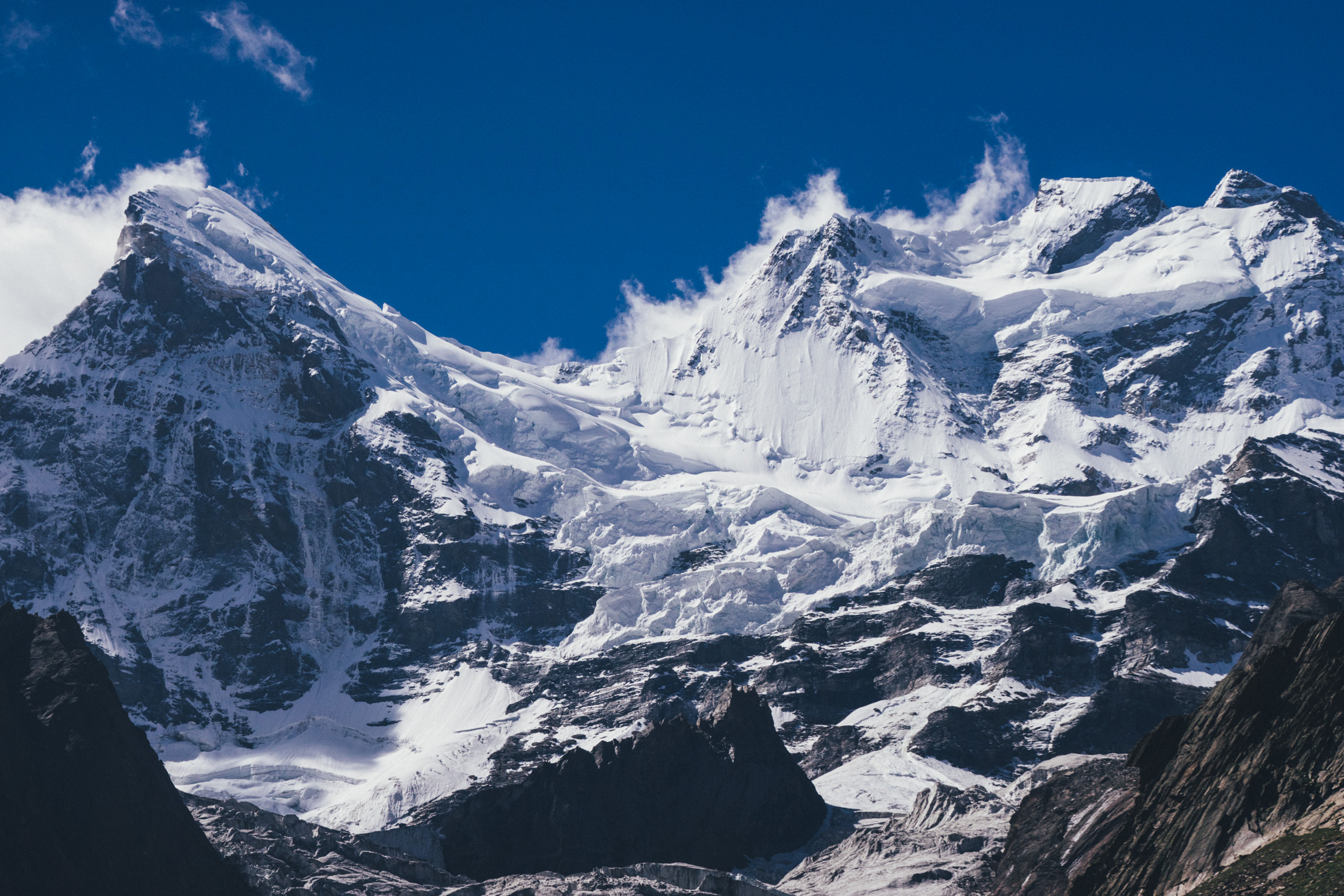Spiti or “The Middle Land,” literally refers to its’ orientation between Tibet and India. Tibetan Buddhism has the heaviest influence in the area with a lineage tracing back for thousands of years. During the 1950’s when China invaded Tibet, many Tibetans including the Dalai Lama took refugee in these mountains. Most of the areas we have visited have felt more like a lost Tibet than India.
Bouncing down the boneshaking road from Chatru to Batal, I begin to question why we purposely seek out unpaved routes. My ass literally rubbed raw from the relentless rocky road. Laura Stone, the author of “Himalaya by Bike,” mentions this is the worst section, I have learned to heed her wisdom.
Batal, the last stop before the climb up Kunzum La, consists of a few temporary family-run stone dhabas. Immaculate peaks loom in the background. One family dhaba woo’d us with their cheerful smiles, hot tea, and “rooms” across from their dhaba. We opt for the cozy 3 foot tall hobbit dwelling complete with wooden wheel door. While sunning and drinking tea outside, we make friends with a passing motorcyclist from Agra. We feast on fresh pomegranates and convince our new friend to stay for the night. He had recently swore off marriage, job security, and bought a motorcycle to travel for as long as possible.
Sea buckthorn is a superfood that grows rampantly all through out the valley. As an antioxidant, Sea buckthorn contains vitamins A, B1, B2, B6, C, and other active ingredients. It makes a delicious juice or tea and we drink it every chance we get.
"Thick frost encases our bikes in the morning, winter has been tailing us for the past few weeks now."
A few miles up Kunzum La we detour down a narrow roller coaster of a dirt road to a high-altitude lake, Chandra Tal. The ease of the flowy jeep-track keeps us smiling as we roll on to the shore of one of the most picturesque lakes imagined. Vibrant pastel hues of the surrounding mountains cast a rainbow over the water’s emerald surface. Snowy peaks tower above as we sprawl on the soft, grassy bank taking in the warmth of the sun. The water is freezing, deathly cold, and people have died trying to swim in it. A group of ten potbellied 40+ year old Indian men in business attire: stroll to the opposite bank, strip down to tighty-whities, and proceed to splash around in the frigid water. Squealing like teenage girls, the business men indulge in an hour long photoshoot. Priceless.
Thick frost encases our bikes in the morning, winter has been tailing us for the past few weeks now. We planned our North-to-South route through the Indian Himalaya based on the weather and the necessity to cross Kunzum La before the snows arrive. Looks like we made it just in time. Despite the cold, we set out early to finish off Kunzum. My fingers are numb little ice cubes as I struggle to squeeze the brakes. A runway of prayer flags, freshly painted stupas and jurassic peaks celebrate the top of our last big pass in India. Sweat has long replaced the ice from this morning.
Today will be a longer mile day, but we’re making excellent time coasting down a dusty steep descent of rubble heading to Kaza, the next larger town since Keylong. My mind starts to wander, framing photos in my head as I try to predict the next perfect shot. Suddenly my frame goes completely to dust, I feel my front tire veer out of control, and all I can think: “Are you f*cking kidding me?! I’m going down!!!”
Laying facedown on the ground I hear the eerie whistle of air escaping. I scream out for Eric ahead to stop. First we assess my body damage, luckily just scrapes and bruises, and than the bikes’. I am beyond grateful that nothing is broken on either of us. I must have slipped off the gnarled pavement and sliced my front tire sidewall. We had known the sidewalls on the Surly Knards were too thin, but valued the 3” width and knobby tread. Eric makes valiant efforts to salvage my tubeless setup with a boot, but soon a second hole is discovered with a dent in the rim rendering the whole setup impossible to fix on the side of a road. After much frustration and time we dump the precious Orange Seal and resort to a tube. Worried about daylight, I warily get on my bike. It’s still 40 miles to Kaza. That’s when we discovered Eric’s front tire is completely flat too, also due to a huge gash in his sidewall – what are the chances?! We dump his Orange Seal and are both now rolling with tubes in the front.
Grumpy and filthy we drag ourselves into Kaza just before sunset. Despite its’ unremarkable atmosphere, we welcome a few days rest and spend some time at a local festival. We indulge all the non-dal food we can find and exhaust the painstakingly slow wifi at our guest house. We are mainly here to obtain our special permits to continue down the valley which nearly grazes the Tibetan border.
Hitching in mountain country is common, considering most of the population do not have personal cars. And why resort to an exhaustingly steep climb for a side trip when it’s your day off? Giving ourselves a break from Kaza we catch a ride to Ki monastery with a women driver, not typical in these parts. After a few stalls and lurches, we begin to question our position surfing in the back of this truck, it becomes evident our driver is in the middle of a driving lesson on a narrow road in the himalaya! Ironically, she is still one of the safest drivers we’ve had. We sit and have tea with the man giving the lesson in the passenger seat, a Canadian that has involved himself with a girls hostel in Kaza many years ago. Every summer he returns to teach computer lessons and his family even provides scholarships for the most promising girls higher education. It is incredibly motivating and heartbreaking to hear the difficulties these rural girls face. This kindhearted man is not the first inspiring westerner we’ve encounter to invest time and money in the welfare of the youth in this region.
A fortress of spiral stacked structures crowns the peak of the tallest hill. Ki monastery is the largest Tibetan Buddhist monastery in the valley. Given the amount of ambushes, battles, and natural disasters Ki has survived, it is lucky to have celebrated its’ millennium in the year 2000. We are invited to share a meal with the monks, who are scattered about the grounds eating dal and rice. Winding through low-ceiling hallways, we make our way back to the smoke blackened mud walls of the kitchen to fill our plates.
After a few days in Kaza our departure is overdue and it feels good to leave, and even better with a long downhill ahead of us. Having not ridden much since my fall, my confidence is shaken. I cringed at the long bumpy dirt road and ride my brakes hard. These roads do not allow for hesitation or indecisiveness, I need to get my shit together.
Tabo, is a beautiful charming old village with vibrant flowers throughout. The village is centered around one of the oldest Buddhist monasteries in the world, built in 996 CE. The compound is made up of different small adobe temples dedicated to different deities with life-sized sculptures inside. Mesmerizing floor-to-ceiling frescoes detail each room with historical depictions of the different Buddhas. Tabo monastery is unlike any we’ve experienced and is still in use today. Photos of the interior are not allowed, but I am somewhat glad I will only have memories of these mystical mud rooms.
The steepness of the sandy rock terrain that makes up much of the valley lends itself to constant landslides. Having heard horror stories of road closures and 4+ hour delays, we knew we’d hit one sooner or later. Our first landslide was still active as the crane quickly shoveled away the excess. Rocks were still tumbling down as the supervisor of the clearing frantically waved us through to go as fast as we can. Yet another reason to always wear a helmet…
Let’s say we’re just taking our time on this route. Without many days left in the mountains, we decide to take another day off in Nako. Another cute old village with gigantic views straight into Tibet. We spend the day hiking around the vertical landscape, reading by the glowing green lake, and wandering around the maze of alleyways through the old village. Soon we will be in crowded cities, but for now we will enjoy the last of the calm innocence of the mountains and its’ people.
